Vered Neta's Blog, page 3
April 20, 2025
Why They Do What They Do.
One of the most important—but weirdly overlooked—questions in storytelling isn’t what happens.
It’s WHY.
Like, why does someone stay in a toxic relationship (Girl, run!), or risk everything for a complete stranger? Why choose revenge over peace, or silence when it’s obviously confrontation o’clock?
These burning questions are more than juicy plot points. They’re the heartbeat of a story.
The “why” is what makes characters tick. It’s what gives the audience something to lean into, scream at, cry over, or cheer for. Without motivation, even the most gorgeously shot blockbuster feels… meh.
But when a character’s drive is clear and rooted in something real? Oof.
That’s when you get goosebumps.
Character motivation is the secret sauce that gives a story emotional flavor.
It explains choices, justifies chaos, and even makes bad behavior kind of understandable (hello, villain origin stories). When it’s done right, it feels like magic.
When it’s off? Something feels hollow, even if we can’t put our finger on it.
So where do these deep, compelling motivations come from? Welcome to the world of psychology, my friend.
Writers (and psychologists) have long known that humans tend to operate from a few core drives.
Let’s dive into 7 classic psychological motivations, each illustrated by a movie that absolutely nailed the “why.”
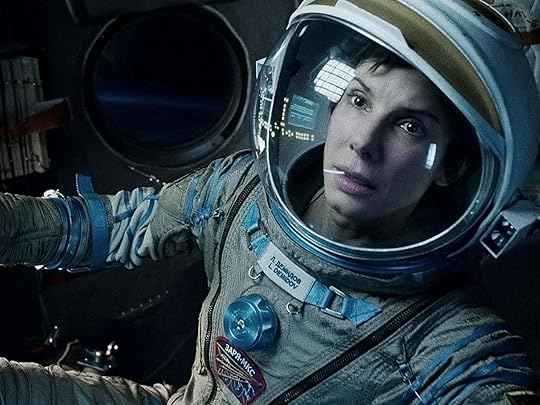 #1 – Safety – The Need to Survive and Feel Secure.
#1 – Safety – The Need to Survive and Feel Secure.
This is ground zero for human motivation. Forget your dreams of starting a pottery studio—if a tiger’s chasing you, you’re focused on not dying.
Safety includes physical survival, sure, but also emotional security. We’re wired to avoid danger and seek stability.
Sandra Bullock’s Dr. Ryan Stone in Gravity is fighting for her life in space. A debris storm shreds her shuttle, and suddenly she’s just a lone astronaut drifting into the void.
But here’s the twist: this isn’t just about surviving zero gravity. Ryan’s also battling grief—she lost her daughter, and she’s emotionally untethered. Her space struggle mirrors her internal journey to find the will to live again.
Why it works: It shows how physical survival is often tied to emotional resurrection.
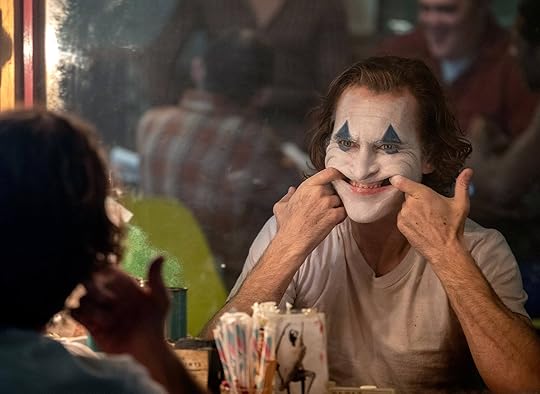 #2 – Love & Belonging – The Desire for Connection.
#2 – Love & Belonging – The Desire for Connection.
Once we’re safe, we start craving something warmer: love, friendship, a group chat that actually replies. This drive fuels some of the most emotional stories.
Characters who are lonely, rejected, or longing for connection will go to great lengths—good or bad—to fill that void.
In Joker Arthur Fleck (Joaquin Phoenix) doesn’t want to watch the world burn. Not at first.
What he really wants is to be seen, heard, loved. He craves connection and kindness.
But repeated rejection, societal indifference, and untreated mental illness twist that longing into something darker. His transformation into Joker is chilling, yes—but deeply human.
Why it works: We don’t excuse Arthur’s actions, but we understand the aching loneliness that drove them.
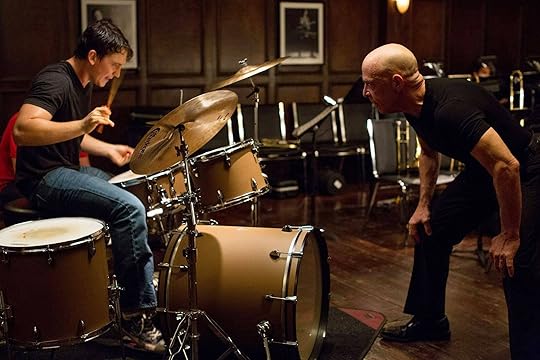
#3 – Esteem – The Need for Respect, Recognition & Achievement.
You’ve got a dream. You want to matter. This drive is about building self-worth—earning respect from others and yourself. It can be inspiring (You go, girl!) or destructive (Put the drumsticks down, Andrew!).
When characters chase greatness, fame, or mastery to feel “enough,” drama is guaranteed.
Andrew Neiman (Miles Teller) in Whiplash isn’t just trying to be a good jazz drummer. He wants to be legendary.
Under the brutal mentorship of Terence Fletcher (J.K. Simmons), his desire to prove himself becomes obsession. Esteem becomes his entire identity—and it nearly destroys him.
Why it works: It’s a raw look at the price of tying your worth to applause.
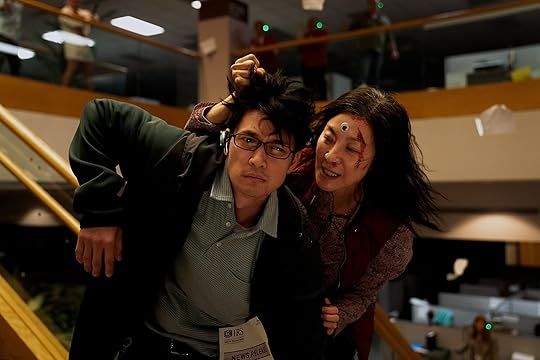 #4 –
Self-Actualization – The Need for Purpose and Fulfillment.
#4 –
Self-Actualization – The Need for Purpose and Fulfillment.
This is the “what’s it all about?” motivation. It’s not about survival, belonging, or validation—it’s about becoming your truest self.
Self-actualization stories are often emotional rollercoasters with a side of existential crisis. Characters may feel stuck or haunted by paths not taken, until something cracks them open.
In Everything Everywhere All At Once Evelyn Wang (Michelle Yeoh) is pulled into a chaotic multiverse filled with sausage fingers and martial arts. But underneath the madness is a quiet ache: “Did I live the right life?” She’s driven to find meaning in the mess, to understand who she could’ve been—and who she still can be.
Why it works: It’s not about saving the universe. It’s about choosing presence, love, and self-acceptance.

#5 –
Control – The Urge to Influence Outcomes and Avoid Chaos
.
Ever made a color-coded planner after a bad breakup? That’s the need for control talking. This motivation kicks in when life feels unpredictable or when characters have experienced powerlessness.
They seek control over their environment, others, or themselves—sometimes in healthy ways, sometimes not so much.
Joy (Brie Larson) in Room has survived years in captivity, raising her son in a single, tiny room.
Her motivation? Regaining control of their lives. Even after escape, the battle isn’t over—PTSD, media intrusion, and the overwhelming outside world crash in. Meanwhile, little Jack has to unlearn everything he knew about reality.
Why it works: It shows how control is less about power and more about reclaiming agency.
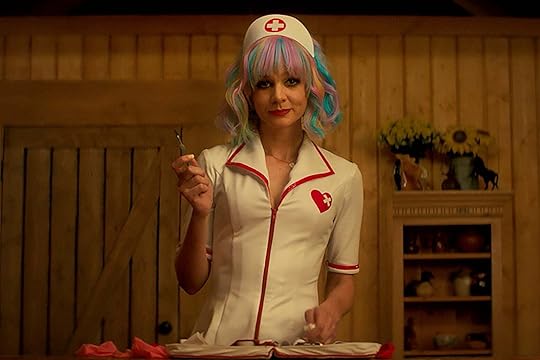
#6 –
Redemption – The Drive to Make Amends and Heal
.
Redemption arcs are catnip for emotional storytellers. These characters are haunted by guilt, loss, or failure. They’re not trying to go back—they’re trying to do better.
Redemption stories are powerful because they tap into our belief in second chances (and our secret wish to fix our own regrets).
In Promising Young Woman Cassie (Carey Mulligan) is not out for random revenge—she’s on a deeply personal mission.
Her best friend was sexually assaulted, and no one was held accountable. Cassie’s motivation is to force a reckoning—not just for the perpetrators, but for a culture that stayed silent. Her arc is fueled by pain, love, and the need to set something right.
Why it works: It’s a chilling yet poignant example of how grief can shape a quest for justice and healing.
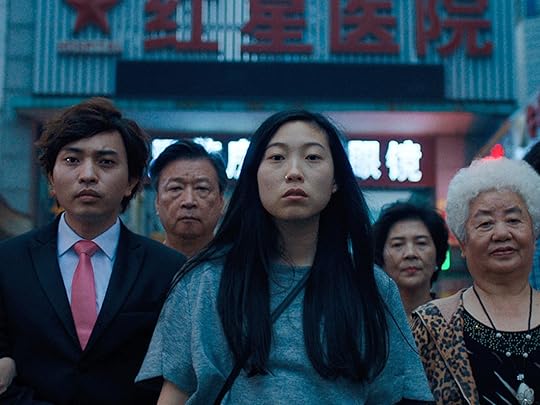 #7 –
Identity – The Quest to Understand Who We Are.
#7 –
Identity – The Quest to Understand Who We Are.
Ah, the good ol’ identity crisis. These characters are trying to figure out where they belong, who they really are, or how to reconcile different pieces of themselves.
It’s especially strong in coming-of-age stories, immigrant tales, or any narrative about shifting roles (hello, midlife reboots).
Billi (Awkwafina) in the movie The Farewell flies back to China for what she thinks is a wedding—only to learn the family’s hiding her grandma’s terminal diagnosis. Now she’s caught between two cultures, two sets of values, and two versions of herself. Her “why” is all about navigating love, loyalty, and identity across continents.
Why it works: It captures the quiet ache of living between worlds—and the longing to belong in both.
In Conclusion – Motivation isn’t just a line in a character bio. It’s the emotional GPS of your story. It tells us why a character does what they do—and whether we cheer, cringe, or cry when they do it.
Next time you watch a movie, try this little game:
 Ask: What does this character need? Not want—NEED.
Ask: What does this character need? Not want—NEED.
 Then ask: Where does that need come from?
Then ask: Where does that need come from?
 And finally: What’s at stake if they don’t get it?
And finally: What’s at stake if they don’t get it?
Suddenly, you’ll start seeing characters not just as heroes or villains—but as people, beautifully flawed and painfully real.
Happy writing!
Now it’s YOUR turn – What’s a film where the character’s motivation really hit you hard?
Would love to get your input in the comment box below.
The post Why They Do What They Do. appeared first on Vered Neta.
April 13, 2025
Non-Linear Storytelling Made Simple.
Non-linear storytelling is like the rebellious cousin of traditional narrative structures. It flips timelines, twists perspectives, and throws the rules out the window. But why does it work so well? Well, it demands active engagement from the audience, urging them to think critically, question motives, and piece together fragmented details.
This kind of storytelling doesn’t just tell you a story; it invites you to work for it. The payoff? A deeper emotional and intellectual experience that adds layers of complexity, suspense, and surprise.
By experimenting with time, perspective, and memory, non-linear narratives challenge our perceptions of reality, forcing us to reconsider what we believe is true about the characters, themes, and even the very nature of time itself.
8 Essential Principles Of Non-Linear Storytelling.
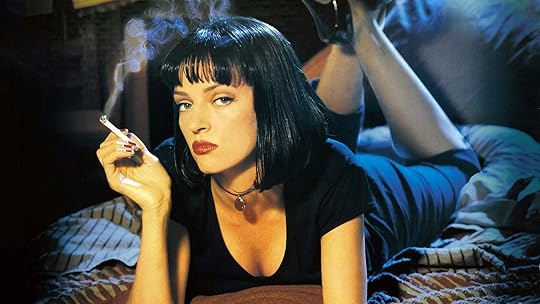 #1 – Fragmented Chronology.
#1 – Fragmented Chronology.
One of the most iconic techniques in non-linear storytelling is fragmented chronology, where events are presented out of order.
This technique is a bit like starting a puzzle with no picture on the box — you have to actively engage your brain to figure out how everything fits together.
Take Pulp Fiction by Quentin Tarantino, for example. The film unfolds in a scrambled, non-sequential order, weaving together multiple storylines that collide in unexpected ways. Instead of following a straight line from start to finish, you get glimpses of different moments that eventually form a larger picture.
This fragmented structure not only keeps viewers hooked as they try to piece together the timeline but also gives the characters’ journeys a more dynamic and interconnected feel. Tarantino’s decision to rearrange the chronology turns an otherwise simple crime narrative into something much richer and more engaging.
Similarly, in William Faulkner’s The Sound and the Fury, the fragmented structure mirrors the inner turmoil of its characters. One section of the novel is narrated by Benjy, a mentally disabled man whose perception of time is far from linear.
The disjointed narrative reflects Benjy’s fluid sense of time, pulling readers into his emotional and psychological experience, where the passage of time isn’t fixed but rather a chaotic, elusive force. This fragmentation of chronology forces readers to confront the world from a perspective that feels just as disordered as the narrator’s mind.
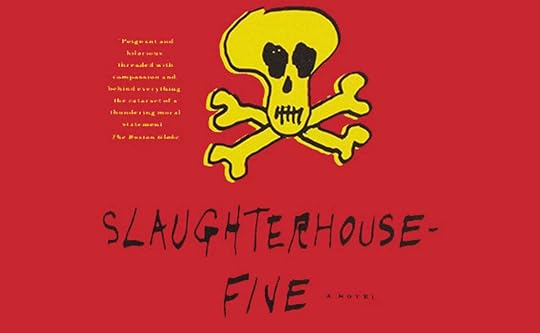 #2 – Flashbacks and Flash-forwards.
#2 – Flashbacks and Flash-forwards.
Flashbacks and flash-forwards are the time-bending magic tricks of non-linear storytelling. These techniques inject moments from the past or future into the present narrative, enriching the storyline and providing deeper emotional context.
In Christopher Nolan’s Memento, the film’s structure mirrors the protagonist’s short-term memory loss. The story is presented in reverse chronological order, with short flashbacks scattered throughout.
This mirrors the protagonist’s disorientation and confusion, as viewers, just like the character, are forced to slowly unravel the mystery of what happened. As the story unfolds backwards, the tension mounts, and viewers are left questioning what’s real, what’s a memory, and what’s a trick of the mind.
In Kurt Vonnegut’s Slaughterhouse-Five, the protagonist Billy Pilgrim is “unstuck in time,” hopping between moments of his life without warning. These jumps, often appearing as flashbacks or flash-forwards, highlight the randomness of existence.
By jumping unpredictably between past, present, and future, Vonnegut forces readers to grapple with the nature of fate, free will, and the inevitability of death, making time itself a key character in the novel. Flashbacks and flash-forwards here aren’t just narrative tools; they are ways to explore the deeper themes of the story.
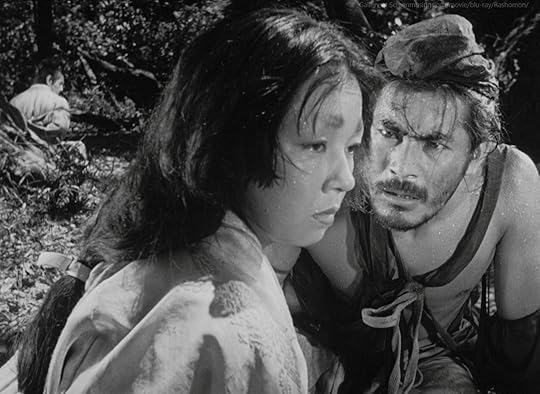 #3 – Multiple Perspectives.
#3 – Multiple Perspectives.
What happens when we hear the same story from different perspectives? Non-linear storytelling often uses multiple viewpoints to show how subjective truth really is.
We see the same event unfold through different eyes, and suddenly, what we thought was clear becomes a tangled web of conflicting accounts.
Akira Kurosawa’s Rashomon is one of the pioneering films that used this technique. The story revolves around a single event — a violent crime — but each character involved gives their own version of what happened.
A modern example is Gillian Flynn’s Gone Girl, where alternating perspectives between Nick and Amy — both unreliable narrators — keep the reader constantly shifting allegiances.
As both characters manipulate the truth to suit their agendas, the reader’s understanding of what happened and why is thrown into a constant state of flux. Flynn’s use of unreliable perspectives heightens the suspense and forces the reader to wade through layers of deception, ultimately revealing a much darker, morally ambiguous narrative.
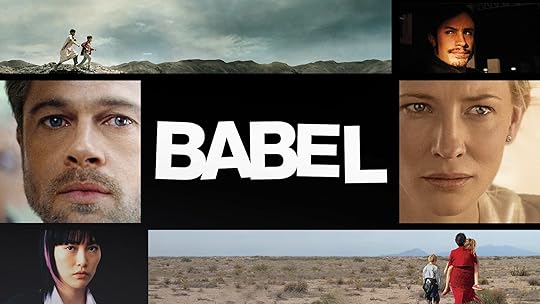 #4 – Parallel Storylines.
#4 – Parallel Storylines.
Parallel storylines take multiple seemingly unrelated narratives and weave them together, showing how everything — and everyone — is connected. These narratives often explore common themes from different angles, enriching the overall story.
Alejandro González Iñárritu’s Babel is a masterclass in parallel storylines. The film weaves four distinct stories set on different continents, all linked by a single gunshot.
As these stories unfold, their connections become clear, highlighting themes of communication, misunderstanding, and the far-reaching impact of human actions. The parallel storylines create a rich tapestry that emphasises how seemingly unrelated events can reverberate across the globe, connecting us all in ways we might not expect.
David Mitchell’s Cloud Atlas is another great example of parallel narratives. This novel spans centuries and continents, telling six separate stories that eventually link through characters, themes, and motifs. Each story touches on the others in surprising ways, making the reader realise that actions, decisions, and events have a ripple effect across time. The novel’s interconnectedness reinforces the cyclical nature of history and the shared human experience
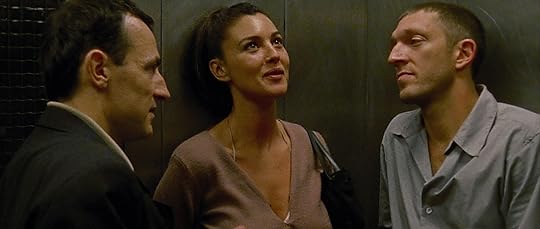
#5 – Reverse Chronology.
Reverse chronology is a non-linear technique that forces us to witness the consequences of actions before understanding their causes.
This method doesn’t just surprise us; it packs an emotional punch by revealing the end before the beginning.
Gaspar Noé’s Irreversible uses reverse chronology to devastating effect. The film starts with a horrific and brutal climax, then works its way backwards, slowly revealing how the characters got to this terrible moment. Watching events unfold in reverse intensifies the dread and makes the inevitable tragedy even more poignant.
In Martin Amis’s Time’s Arrow, the story of a Nazi doctor is told in reverse. This backwards storytelling forces readers to reassess the moral implications of the doctor’s actions, deepening the emotional complexity and unsettling the reader. By revealing the consequences first, Amis emphasises the horror of the character’s choices, making us confront the past in a deeply uncomfortable way.
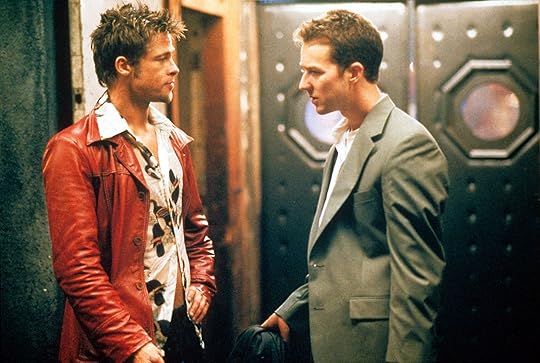
#6 – Unreliable Narrator.
The unreliable narrator is one of the most powerful tools in non-linear storytelling. This device keeps the audience on their toes, forcing them to question everything they’ve been told — and sometimes, everything they believe about the characters themselves.
In David Fincher’s Fight Club, the unnamed narrator presents his story in a rational and logical way, but a shocking twist reveals that much of what the audience has been led to believe is false. The narrative’s unreliability forces viewers to reconsider everything they’ve seen and question their perception of reality.
In The Silent Patient by Alex Michaelides, the story is narrated by Theo Faber, a psychotherapist obsessed with unlocking the mystery of his patient Alicia Berenson’s silence after she is accused of murdering her husband.
As the story progresses, Theo’s own secrets begin to emerge, revealing that he’s not the trustworthy narrator we thought he was. The unreliability of Theo’s narration deepens the suspense and highlights themes of obsession, guilt, and the distortion of truth. The shocking twist at the end forces readers to reconsider everything they’ve been led to believe.
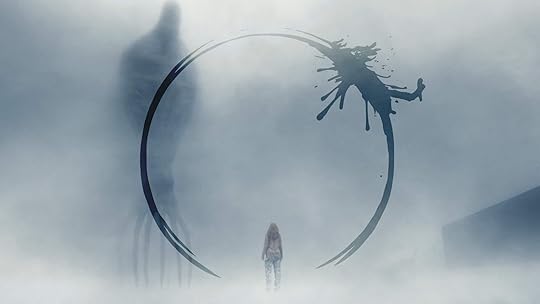 #7 – Circular Narrative.
#7 – Circular Narrative.
Circular narratives loop back to the start, often reinforcing ideas of fate or existentialism. These stories create a satisfying sense of closure while also encouraging deep reflection on their meaning.
Denis Villeneuve’s Arrival uses a circular narrative structure to explore the nature of time. As the protagonist’s understanding of time evolves, it’s revealed that her visions of the future are actually memories from the past. This circularity not only redefines the way we view the film’s events but also ties into the film’s themes of language, perception, and how we understand time itself.
Similarly, Gabriel García Márquez’s One Hundred Years of Solitude ends where it begins, with the tragic fate of the Buendía family locked in a cyclical pattern. The novel’s circular structure reinforces themes of time, memory, and inevitability, making it clear that the past is never truly gone but continually repeats itself.
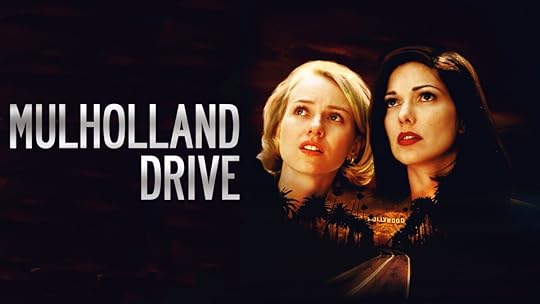 #8. Dream Logic and Stream of Consciousness.
#8. Dream Logic and Stream of Consciousness.
Non-linear storytelling often dips into the realm of dreams and consciousness, where logic takes a backseat to the erratic flow of thoughts, memories, and perceptions.
David Lynch’s Mulholland Drive is a prime example of dreamlike storytelling.
The film shifts unpredictably between time, identity, and reality, creating a narrative that mirrors the protagonist’s unravelling mind. The disjointed structure leaves viewers questioning what’s real and what’s imagined, producing a surreal experience that defies explanation.
James Joyce’s Ulysses is another iconic example. It uses stream-of-consciousness to immerse readers in the fragmented thoughts of the protagonist, Leopold Bloom. The narrative jumps between reality, memory, and fantasy, blurring the lines between the conscious and unconscious mind, leaving readers to navigate a maze of erratic, often disorienting thought patterns.
In Conclusion – Non-linear storytelling works because it challenges traditional structures, keeping audiences on their toes. It encourages active participation, fosters deeper engagement with the themes, and creates suspense, tension, and mystery. It also provides rich opportunities for character exploration, allowing for complex narratives that resonate long after the story ends.
Happy writing!
Now it’s YOUR turn – What’s your favourite non-linear movie or book?
Would love to get your input in the comment box below.
The post Non-Linear Storytelling Made Simple. appeared first on Vered Neta.
April 6, 2025
What Makes a Book-to-Screen Adaptation Great?
Adapting beloved books into movies or TV shows is no easy feat.
I’ve written about this challenge before, but it seems more important than ever as the film industry continues to grapple with risk-averse decision-making.
In today’s world, studios lean heavily toward investing in well-established intellectual properties (IPs)—think bestselling novels, iconic franchises, or massive fanbases that have already proven their worth.
But here’s the catch: even a fantastic source material won’t save an adaptation if it’s not done right. A great story, yes—but how it’s told? That’s where the magic happens.
The monumental success of Game of Thrones kicked off a golden age of literary adaptations in both film and television. This success sparked a massive demand for fresh, exciting source material to bring to the screen.
But transforming a book into something visually compelling? Well, that’s a whole different ball game.
It’s like trying to take the rich world of a novel and squeeze it into a two-hour movie or a 10-episode series.
It sounds easy, right? Spoiler alert: It’s not.
Let’s dive into the challenges that come with literary adaptations, and how some stories turn out brilliantly, while others, well, not so much.
The Challenges of Literary Adaptations.
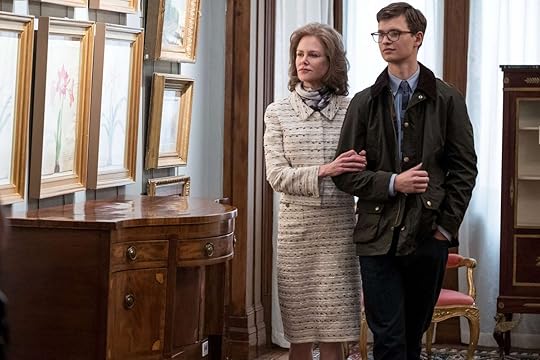 #1 – Condensing Lengthy Narratives.
#1 – Condensing Lengthy Narratives.
One of the biggest hurdles in adapting a novel is the sheer length of the source material. Novels often have rich subplots, deep character arcs, and inner monologues that make them unique in the first place—but these things don’t always translate neatly to film or TV.
There’s just no room to keep everything in a two-hour movie or a 10-episode series.
What gets cut? What stays? How do filmmakers keep the essence of the story intact?
Take Dune (2021), for example. Frank Herbert’s epic sci-fi saga is vast and sprawling—too much for one movie. So, director Denis Villeneuve did something clever: he split the story into two parts.
By doing this, he was able to preserve the intricate world-building and complex characters without watering them down. The result? A visually stunning, immersive experience that still felt true to its source.
On the flip side, The Goldfinch (2019), based on Donna Tartt’s Pulitzer Prize-winning novel, tried to cram too much into a single film. The novel’s introspective nature and multi-layered storytelling became lost, and the result was a rushed, fragmented adaptation that felt disconnected from the book’s rich narrative.
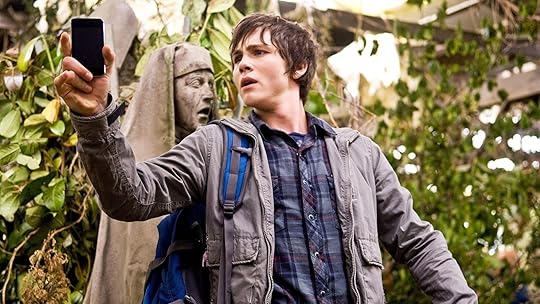
#2 – Balancing Faithfulness and Creative Freedom.
Fans of the original book often expect their beloved characters and plotlines to be represented exactly as they remember them.
But a strict word-for-word adaptation doesn’t always work in film or television. Books often dive deep into characters’ thoughts, emotions, and backstories, but too much of this can slow down the pacing of a movie or series.
Take The Handmaid’s Tale (2017-present). Hulu’s adaptation of Margaret Atwood’s novel remained largely faithful to the source, but it didn’t shy away from extending the story beyond the novel’s ending. By doing this, it was able to explore new directions while staying true to the core themes of oppression and resistance.
On the other hand, Percy Jackson & The Olympians: The Lightning Thief (2010) made significant changes to Rick Riordan’s story, which alienated fans. As a result, it didn’t quite capture the magic of the books.
The upcoming Disney+ series is looking to correct that by adhering more closely to the original material.
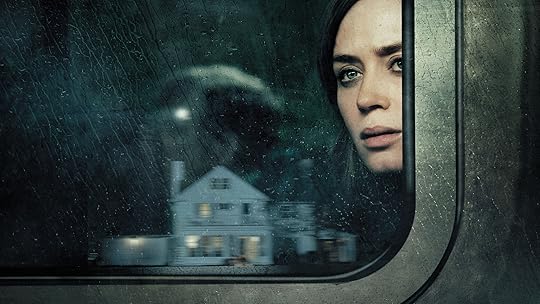 #3 – Translating Internal Narration and Character Psychology.
#3 – Translating Internal Narration and Character Psychology.
Books often give us a window into the characters’ minds, allowing us to hear their thoughts and feelings in a way that’s hard to capture on screen.
But how do you translate inner monologues and deep psychological insights visually? It’s a challenge.
David Fincher’s Gone Girl (2014) nailed this. The movie used alternating perspectives and unreliable narration, staying true to Gillian Flynn’s psychological thriller while keeping the tension high.
But not every film is so successful. The Girl on the Train (2016), for example, struggled with the same challenge. The film attempted to convey its protagonist’s fragmented memories and unreliable perspective, but it didn’t quite pull it off, leaving the story feeling muddled compared to the gripping novel.
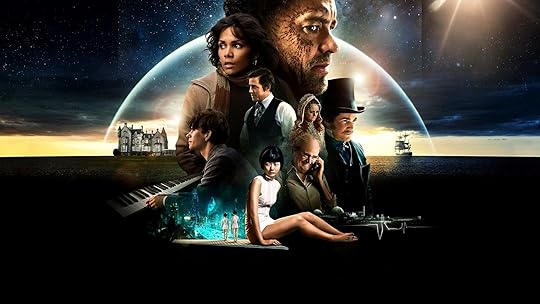 #4 – Handling Complex or Abstract Themes.
#4 – Handling Complex or Abstract Themes.
Novels often dive into deep, abstract ideas—things like nonlinear timelines, shifting identities, or complex philosophical musings.
Translating these abstract concepts into visual form requires a lot of creativity, and it doesn’t always work out as planned.
Consider Cloud Atlas (2012), which took a bold approach by interweaving six interconnected storylines across multiple timelines. It was an ambitious attempt to bring David Mitchell’s novel to life, but some viewers found the execution confusing.
On the other hand, Arrival (2016), based on Ted Chiang’s short story Story of Your Life, handled complex linguistic and philosophical themes with finesse. It used innovative editing and visual techniques to make those concepts not just understandable but emotionally resonant.
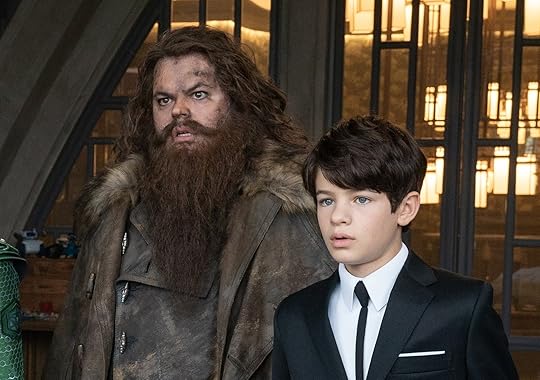
#5 – Meeting Fan Expectations While Appealing to New Audiences.
Striking the perfect balance between staying true to the original source and making the story accessible to newcomers is no easy task.
Fans of the books have deep emotional connections to the material, and any deviation can spark backlash. But you also want to make sure the adaptation stands on its own, so people unfamiliar with the book can enjoy it too.
Take Shadow and Bone (2021), for example. The series adapted multiple books from Leigh Bardugo’s Grishaverse and successfully combined them into one cohesive narrative. This approach made it easier for new viewers to jump in while still keeping enough elements from the books for existing fans to enjoy.
However, Artemis Fowl (2020) tried to change too much from the original book, and it ended up alienating both fans and newcomers, resulting in a critical and commercial flop.
The Triumphs of Literary Adaptations.
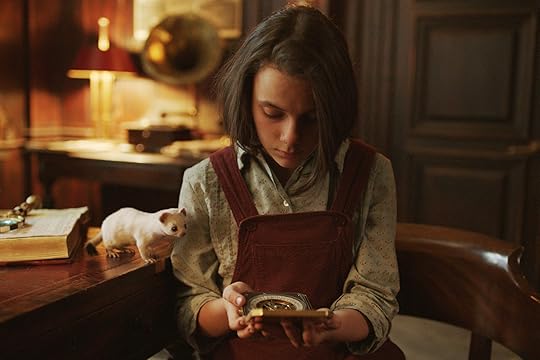 #1 – Expanding the Story for the Screen.
#1 – Expanding the Story for the Screen.
One of the benefits of adapting a book to television is that the format allows for more room to breathe.
TV shows offer the space to explore deeper character arcs, subplots, and themes that might get glossed over in a film. This is especially useful for complex novels with sprawling narratives.
Take His Dark Materials (2019–2022). The series format allowed for a richer, more faithful adaptation of Philip Pullman’s work compared to the 2007 film The Golden Compass. With multiple seasons to explore the world and its complex themes, the TV show captured much more of the essence of Pullman’s trilogy.
Similarly, Little Women (2019), directed by Greta Gerwig, used a non-linear timeline to bring a fresh emotional resonance to Louisa May Alcott’s classic. It was a perfect example of how an adaptation can honour the original material while also giving it a new spin
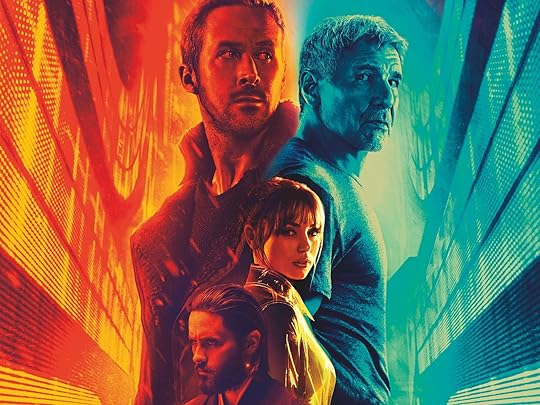
#2 – Using Visual Storytelling to Enhance the Narrative.
Film and television have a unique strength: visual storytelling. Through cinematography, lighting, colour schemes, and composition, filmmakers can convey emotions and themes in ways that words alone cannot.
This can be especially powerful when adapting literary works.
In Blade Runner 2049 (2017), the filmmakers used stunning visuals to expand on the existential themes in Philip K. Dick’s Do Androids Dream of Electric Sheep?. The cinematography created a rich, immersive world that deepened the philosophical questions at the heart of the novel.
Similarly, Call Me by Your Name (2017) used delicate cinematography to convey the subtle emotions of first love, capturing the intimacy of André Aciman’s novel without relying on heavy exposition.
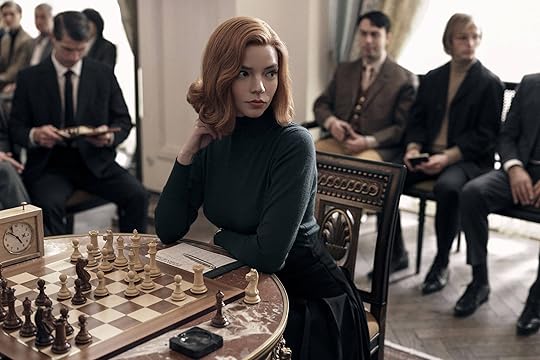 #3 – Leveraging the Long-Form Structure of TV.
#3 – Leveraging the Long-Form Structure of TV.
Television adaptations offer the unique advantage of more time to explore intricate details.
This is perfect for complex novels that require a slower pace and a more measured approach to character development.
Take The Queen’s Gambit (2020), for example. The series format allowed for
an in-depth exploration of Beth Harmon’s character, diving into her struggles with addiction, her chess mastery, and her relationships. It was a character study that would have been impossible to fully capture in a single film.
Station Eleven (2021), adapted from Emily St. John Mandel’s novel, was another example of how TV’s longer format can allow for a non-linear narrative that explores survival, art, and human connection in a way a movie simply couldn’t.
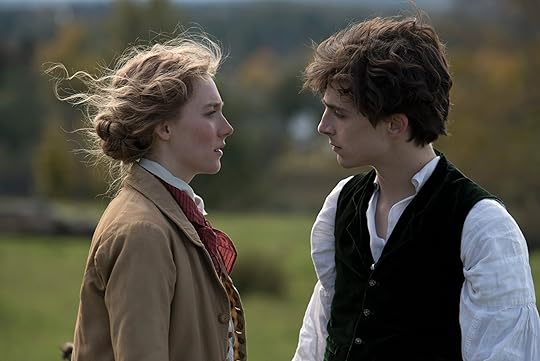 #4 – Updating the Story for Contemporary Audiences.
#4 – Updating the Story for Contemporary Audiences.
Sometimes, adapting a classic story for the screen means modernising it to reflect contemporary social issues and sensibilities.
This approach can breathe new life into old stories without losing their core message.
Greta Gerwig’s Little Women (2019) did just that, focusing on themes of independence and ambition—topics that resonate strongly with modern audiences.
Similarly, The Handmaid’s Tale adapted Margaret Atwood’s 1985 novel with a contemporary twist, making the story’s commentary on authoritarianism and women’s rights feel alarmingly relevant today.
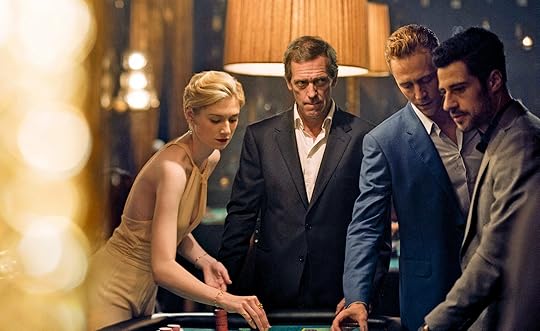 #5. Innovative Storytelling and Perspective Shifts.
#5. Innovative Storytelling and Perspective Shifts.
Sometimes, the best adaptations aren’t just about bringing a book to life—they’re about taking that beloved source material and giving it a bold, creative twist.
Whether it’s switching up the narrative style or adding a new perspective, these adaptations make the story even more dynamic and engaging on screen.
They don’t always stick to the original blueprint, but they elevate the material in a way that makes it feel fresh and exciting.
Take Big Little Lies (2017-2019), for example. Liane Moriarty’s book was already a gripping drama, but HBO’s adaptation kicked it up a notch by shifting between the perspectives of the key women involved in the mystery.
While the book was told from a more neutral third-person point of view, the show allowed each character’s voice to shine, giving viewers a deeper, more intimate look at their lives. Add in the stunning cinematography and tension-filled flashbacks, and you’ve got a story that feels like it could explode at any moment. Now that’s what we call a fresh spin!
Another standout example is The Night Manager (2016-2025). John le Carré’s spy thriller about a hotel manager-turned-secret agent was already packed with intrigue, but the BBC adaptation turned it into an absolute rollercoaster.
The stylish, globe-trotting presentation and modern flair breathed new life into the story, and the shift in perspective—told from Jonathan Pine’s point of view as he seeks revenge—pulled you straight into the world of high-stakes espionage. With its cinematic sophistication and gripping suspense, this adaptation is like a spy thriller you can’t stop watching. Talk about an edge-of-your-seat experience!
In both cases, these adaptations take the bones of the original stories and remix them into something that feels exciting, visually stunning, and emotionally charged. They prove that sometimes, a little perspective shift is all it takes to turn a good adaptation into a great one!
In Conclusion – Adapting literature to the screen is a delicate dance. It’s about preserving the essence of the original while embracing the visual strengths of film and television. Filmmakers must juggle the complexities of condensing lengthy stories, capturing the inner lives of characters, and translating abstract ideas into something tangible for audiences. They also have to find the right balance between satisfying loyal fans and engaging newcomers.
When done well, these adaptations breathe new life into beloved stories and offer a cinematic experience that’s both fresh and familiar. And let’s be honest—when it works, it’s magic.
Now it’s YOUR turn – Which book would you love to see adapted next?
Would love to get your input in the comment box below.
The post What Makes a Book-to-Screen Adaptation Great? appeared first on Vered Neta.
March 30, 2025
Movie Night – Ordinary Angels.
Directed: Jon Gunn
Writer: Meg Tilly, Kelly Fremon Craig & Jeffrey Knight
Starring: Hilary Swank, Alan Ritchson
Trivia: Alan Ritchson explained the scene he was nervous to film was the skating scene because he was unfamiliar with skating. He then joked, “Well, Ed couldn’t skate, neither could I.”
****************************************************
It’s not every day you come across a film that combines raw emotion with powerful performances and a heartwarming message about kindness and second chances.
Ordinary Angels (2024) is one of those rare films that hits all the right notes, leaving you feeling inspired and reminded of the importance of perseverance, community, and the possibility of redemption.
This movie is based on the true story of Sharon Stevens (Hilary Swank), a small-town hairdresser who becomes an unlikely hero when she steps up to help a widowed father raise money for his daughter’s life-saving surgery.
While the premise might sound familiar, it’s the emotional depth and complex characters that set Ordinary Angels apart from similar feel-good dramas.
Hilary Swank: A Force of Nature
As always, Hilary Swank delivers a powerhouse performance. Sharon Stevens is a woman with a mission, and once she decides to help the father and his daughter, nothing can stop her. Swank plays her with the perfect combination of fierce determination and vulnerability.
Sharon is the type of character who will not take “no” for an answer, which is why she’s been able to build a successful business. But underneath that hard-edged exterior lies a woman trying to make amends for her past mistakes, particularly the fractured relationship with her son.
Sharon’s drive to help the family is rooted in her desire to reconnect with her son, whom she alienated during her years as an alcoholic mother. At first, her son isn’t having it—he wants nothing to do with her. However, as the story unfolds and Sharon’s relentless dedication to saving the little girl becomes clear, you begin to understand why she is so motivated to fix her broken relationships.
Swank’s portrayal of a woman trying to rebuild her life while being a fierce advocate for someone else is raw, emotional, and beautifully executed.
Sharon’s arc is a compelling one: she is flawed, but determined, and in her journey to save the girl, she ultimately discovers the path to healing herself. Swank once again proves why she’s one of the best, bringing heart and depth to a role that requires both strength and fragility.
Alan Ritchson: A Different Kind of Tough Guy
If you’re familiar with Alan Ritchson, you probably know him from his tough-guy roles, most famously as Jack Reacher in the TV series Reacher.
But in Ordinary Angels, Ritchson plays a character who is tough in a different way.
Doug, the widowed father who is desperate to save his daughter, is a stoic, no-nonsense guy who resists any offer of help. His pride and belief that he can handle everything on his own create a barrier between him and Sharon’s character, who is, to put it mildly, a force of nature.
Doug’s reluctance to accept help isn’t just about stubbornness—it’s about grief and fear. He’s been through so much, losing his wife and now facing the possible death of his daughter, and the last thing he wants is to depend on anyone else.
Ritchson brings a dynamic blend of toughness and sensitivity to his role as Doug. His performance is understated but impactful, and while his character doesn’t change overnight, his gradual acceptance of Sharon’s support shows how deeply his character is affected by her persistence.
It’s nice to see Ritchson break away from his usual action-packed roles to play someone with more emotional depth. The dynamic between his tough exterior and Sharon’s unrelenting spirit adds a nice contrast and keeps the film grounded in realism.
Their back-and-forth exchanges—particularly as Doug begins to recognize Sharon’s commitment—are some of the film’s best moments.
The Power of Community and Redemption
What makes Ordinary Angels stand out is its portrayal of how a community can come together to achieve something extraordinary. While the story focuses on Sharon’s personal transformation, it also highlights the power of collective action, with neighbours and strangers alike coming together to help a family in need. Sharon may be the driving force, but it’s the willingness of others to step up, support one another, and rally around a common cause that truly makes the difference.
Sharon’s determination is contagious, and as she pushes forward with her mission to raise money for Doug’s daughter, she draws others into her efforts. From organizing fundraisers to reaching out to people she’s never met, Sharon’s unwavering spirit inspires a network of individuals, each of whom plays a small but vital role in the larger mission. The film beautifully captures how, when a community unites for a single purpose, the impossible becomes achievable.
Throughout the movie, we see the importance of people banding together, whether it’s a neighbour offering their time or a local business contributing to the cause. These small acts of kindness create a ripple effect, showing that when everyone does their part, even the most overwhelming challenges can be overcome. Sharon’s ability to lead and unite the people around her—despite the initial resistance from some—becomes the cornerstone of the film’s message: that together, we can accomplish far more than any one person could alone.
By the end, Ordinary Angels emphasizes that no matter the struggle, communities built on empathy, kindness, and cooperation have the power to make a real difference. It’s a reminder that when we work together, we can face adversity and change lives for the better.
Why You Should Watch “Ordinary Angels”
Ordinary Angels is the kind of film that will stay with you long after the credits roll. It’s a beautiful reminder that we all have the power to make a difference, no matter how ordinary we may feel.
Hilary Swank’s incredible performance, combined with Alan Ritchson’s emotional turn as the stoic father, makes this movie more than just a simple drama—it’s a story of redemption, second chances, and the quiet strength that comes from helping others.
If you’re someone who loves films based on real-life events, or if you’re in the mood for a movie that emphasizes positivity, kindness, and the importance of family, Ordinary Angels is definitely worth a watch. It’s an uplifting, emotional, and beautifully acted film that showcases the best of what movies can offer: a story of hope, healing, and the belief that ordinary people can achieve extraordinary things when they put their hearts into it.
VERDICT – 4.5/5 Stars in my Book.
The post Movie Night – Ordinary Angels. appeared first on Vered Neta.
March 23, 2025
Why Your Villains Suck (And How to Fix It).
Let’s face it—villains have come a long way since the days of twirling moustaches and over-the-top evil laughs. Today’s audiences don’t just want some cartoonish bad guy plotting world domination—they crave complex, layered antagonists who make them question their own moral compass.
The best villains make us squirm a little because we can almost root for them. Admit it—you’ve definitely had that moment!
In past posts, I’ve dug into why audiences are fascinated by morally ambiguous characters and how modern storytelling has moved beyond the whole good-vs-evil cliché.
But today, I will be going deeper. I’m about to spill the beans on 7 game-changing techniques for crafting antagonists who are so compelling that they’ll have your readers questioning everything.
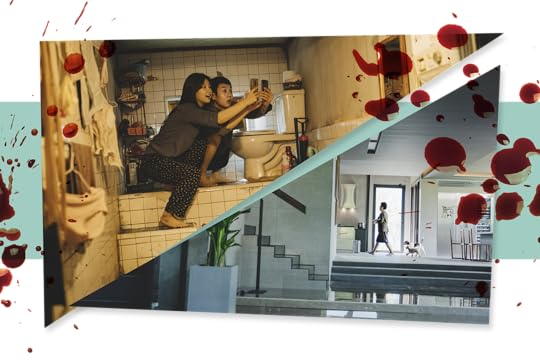 #1 – Integrate Societal Commentary.
#1 – Integrate Societal Commentary.
Forget the one-dimensional evil genius trope. Want your antagonist to stick in people’s minds? Make them challenge the world itself!
A villain who represents a real-world issue or calls out flaws in society becomes so much more than just a hurdle for the protagonist—they become a symbol of something way bigger.
When your antagonist’s worldview—while totally flawed—still highlights real injustices or uncomfortable truths, it hits different.
You’re not just making the audience hate them; you’re forcing them to confront their own biases and maybe even feel a little guilty.
Think about it: a villain who’s got a point is way more unsettling than one who’s just plain evil.
In Parasite, the real antagonist is the brutal class divide itself. The Kim family’s hustle to escape poverty isn’t just about money—it’s about breaking free from a system designed to keep them trapped.
Meanwhile, the wealthy Park family doesn’t even realize how their privilege indirectly crushes those beneath them. The result? A gut-punch of a story that makes you rethink privilege and power.
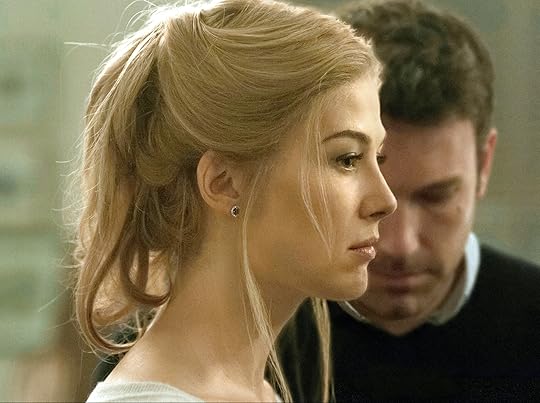 #2 – Employ Unreliable Narratives.
#2 – Employ Unreliable Narratives.
Want to mess with your readers’ heads? Make your antagonist unreliable as heck. Twist the story, blur the line between reality and perception, and make your audience question what’s true.
This kind of antagonist keeps everyone on their toes, including your protagonist, and adds a delicious layer of tension.
In Gone Girl, Amy Dunne is the queen of deception. Her meticulously crafted lies don’t just manipulate the characters—they mess with the audience too.
You think you’ve got her figured out, and then—BAM! Plot twist. It’s a masterclass in keeping everyone guessing.
To pull off an unreliable antagonist, try to play with narrative techniques—like switching perspectives or revealing key information at unexpected moments.
It’s about sowing doubt, leaving the audience constantly re-evaluating what they thought they knew.
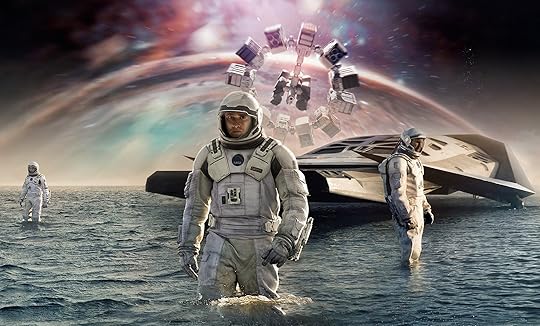
#3 – Utilize Existential Threats.
The best antagonists don’t just pose a physical danger—they shake up your protagonist’s entire worldview.
Make the threat personal, inevitable, and so deeply rooted in the protagonist’s core beliefs that it forces them to question everything they stand for.
Take Interstellar, where the existential threat is not only the survival of humankind but also the preservation of love and human connection in the face of vast, cold, and unfeeling space.
The antagonist, Dr. Mann, embodies the darker side of human survival instincts—his willingness to betray others for his own survival challenges Cooper’s core belief in the importance of sacrifice and human connection.
Moreover, the film itself presents space and time as antagonistic forces that threaten both the mission and Cooper’s bond with his daughter. The existential threat of losing human continuity and the personal threat of losing his daughter force Cooper to navigate a path that balances duty and love.
The key here is to make the threat feel personal and inevitable, pushing the protagonist to the brink of their convictions. Whether it’s a threat to their loved ones, their worldview, or their legacy, the antagonist should feel like a fundamental force that must be reckoned with.
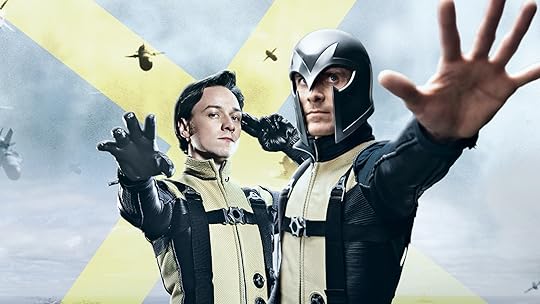
#4 – Create Symbiotic Relationships.
What’s better than a good-versus-evil showdown? A relationship where the hero and villain are two sides of the same coin.
When they’re connected on a deep, almost tragic level, the conflict feels inevitable—and way more interesting.
We can see that in X-Men: First Class, where Xavier and Magneto are friends turned enemies, and it’s heartbreakingly beautiful.
They want the same thing—mutant safety—but their paths to get there are worlds apart. Their relationship is so intertwined that they shape each other’s beliefs, making Magneto feel less like a villain and more like a dark reflection of Xavier.
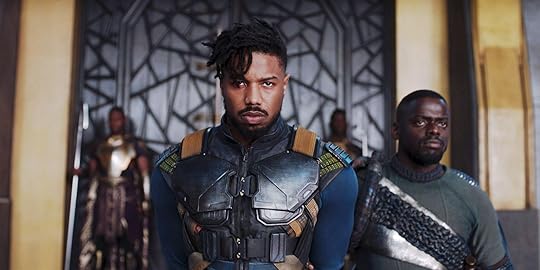
#5 – Incorporate Redemptive Arcs.
Redemption doesn’t mean your villain has to turn into a saint—it just means showing glimpses of vulnerability or regret.
Even if they don’t change, hinting at their humanity makes them way more interesting (and heartbreaking).
In Black Panther, Killmonger’s pain is palpable. Sure, his methods are brutal, but his motivation—wanting justice for his father and oppressed people—makes him relatable.
His death isn’t just a villain defeat—it’s a tragic end for someone who could’ve been a hero under different circumstances.
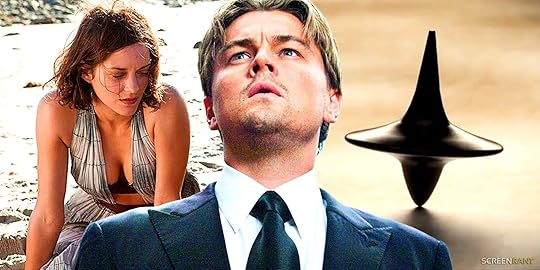
#6 – Blur the Lines of Reality.
Reality-bending antagonists are like storytelling dynamite. They destabilize the protagonist’s grip on reality and keep the audience questioning everything.
It’s perfect for psychological thrillers or stories that flirt with madness.
Nothing demonstrates it better than Inception. The antagonist is not a single person but rather the concept of doubt itself, woven through Dom Cobb’s own subconscious.
Cobb’s guilt and unresolved trauma manifest as Mal, his deceased wife, becomes the embodiment of his doubt and, therefore, the antagonist.
Her presence in his dreams constantly jeopardizes the mission. The blurred lines between dreams and reality force both Cobb and the audience to question what’s real. The film’s iconic ending, with the spinning top, leaves viewers lingering in ambiguity, showcasing how Cobb’s own mind becomes his greatest antagonist.
This approach adds a layer of unpredictability and immerses the audience in the protagonist’s confusion, making the antagonist seem almost omnipotent or transcendent.
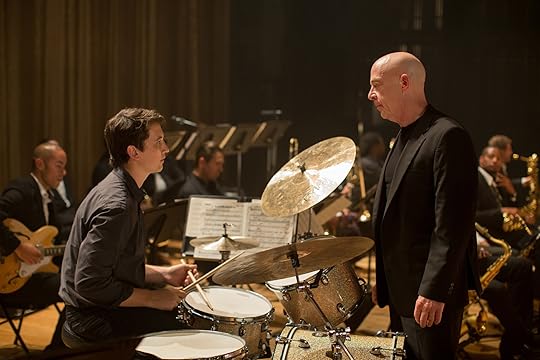 #7 – Reflect the Protagonist’s Inner Demons.
#7 – Reflect the Protagonist’s Inner Demons.
Sometimes, the real villain is the darkness within. Whether it’s unchecked ambition, suppressed rage, or a desire for control, the antagonist can personify the darker impulses that the hero is trying to suppress.
This internal external conflict externalized heightens the story’s emotional stakes, making the antagonist not just a physical threat but a symbolic one. It challenges the protagonist to confront their flaws rather than merely overcoming an external enemy.
Whiplash is a great example of it. Fletcher embodies Andrew’s ruthless pursuit of perfection and recognition. Fletcher’s harsh methods and relentless drive force Andrew to confront how far he’s willing to go to achieve greatness, blurring the line between mentorship and abuse.
Fletcher’s obsession with pushing musicians beyond their limits mirrors Andrew’s own deep-seated fear of mediocrity, making him both a mentor and a manifestation of Andrew’s darkest ambition.
As Andrew succumbs to Fletcher’s brutal training, it becomes clear that Fletcher is not just an antagonist but a reflection of the toxic dedication that consumes Andrew’s identity. By the end, the audience is left questioning whether Andrew has triumphed or lost himself entirely in his quest for perfection.
In Conclusion – Crafting an antagonist who’s more than just evil for evil’s sake is where the magic happens. Mix in societal commentary, unreliable narratives, existential threats, and complex relationships, and you’ll have a villain who sticks with your readers long after the story ends. Don’t be afraid to dive deep into the grey areas—because that’s where the most unforgettable villains live.
Have fun villainising!
Now it’s YOUR turn – Who’s your favorite villain ever—and why?
Would love to get your input in the comment box below.
The post Why Your Villains Suck (And How to Fix It). appeared first on Vered Neta.
March 16, 2025
How Your Life Makes Your Writing Better.
Ever heard the classic writing advice, “Write what you know”? It’s one of those phrases that sounds simple enough—until you sit down to actually do it and think, “Wait, what do I know?”
Spoiler alert: you know a lot more than you think. And no, this advice doesn’t mean every story you write has to be a thinly veiled autobiography. It just means that your life—your crazy, messy, beautiful, heart-wrenching, hilarious life—is a goldmine of inspiration.
Your personal experiences shape your creative writing in subtle and not-so-subtle ways, from the emotions your characters feel to the way they talk, fight, love, and dream. So, let’s dive into five powerful ways your life influences your storytelling—complete with real-life examples from literature and a few of my own stories.
Here are 5 Ways to Use Your Life Experience in Writing.
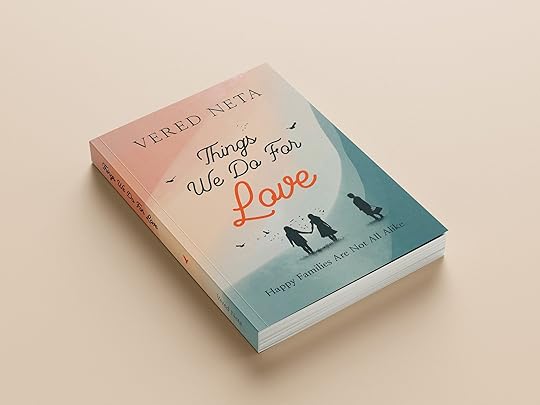 #1 – Authentic Emotions and Relationships.
#1 – Authentic Emotions and Relationships.
Let’s get real for a second. One of the most profound ways personal experience influences writing is through emotions and relationships. You know those moments when a book makes you cry or laugh out loud?
That’s not just because the author has a knack for stringing words together—it’s because they’re channeling something real.
Think about J.K. Rowling’s depiction of loss in the Harry Potter series. The raw grief Harry feels when he learns about his parents’ death? It hits so hard because Rowling herself dealt with significant loss during the writing process. Her own heartbreak seeps into the story, making it resonate on a deeply human level.
In my own writing, I’ve seen how my personal experiences shape the way I portray grief and acceptance.
One of my books, Things We Do For Love, delves into the pain and frustration of caring for a parent with Alzheimer’s. My mother has battled this cruel disease for 15 years, and writing about the protagonist’s tangled emotions—love mixed with exhaustion and guilt—allowed me to process my own feelings. The story became not just a way to honor her but also a means of transforming pain into something meaningful and relatable.
Beyond personal grief, even minor, mundane emotions play a role. Remember that awkward nervousness before a first date or the gut punch of a sudden betrayal? Those are universal experiences that readers immediately recognise. Mining your own moments of vulnerability can breathe life into your characters, making them feel less like paper cutouts and more like real people.
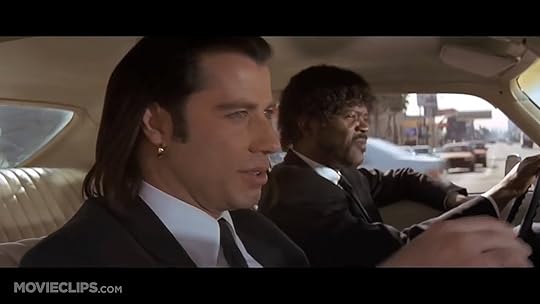
#2 – Crafting Realistic Dialogue.
Ever read dialogue so cringy it makes you want to chuck the book out the window?
Yeah, me too. Realistic dialogue is tricky, but it’s one area where personal experience really pays off.
Listening to how people actually speak—their rhythms, quirks, and awkward pauses—helps create conversations that feel authentic.
Take Quentin Tarantino, for example. The man is a dialogue wizard. Think about the iconic Pulp Fiction scene where Jules and Vincent debate foot massages and burgers before going to, well, murder some people.
It’s bizarrely mundane and brilliantly real, capturing that mix of casual banter and underlying tension. Tarantino’s knack for capturing everyday speech makes his characters feel like people you’ve overheard at a diner—or in some sketchy basement.
Living abroad gave me an ear for accents, idioms, and cultural nuances, which is why my multilingual characters sound authentic instead of like a bad Google Translate experiment. Whether I overhear street vendors arguing or friends swapping stories, I store those snippets away like dialogue treasure. Then, I let them loose when crafting conversations that pop off the page.
The key here is to avoid perfect dialogue. Real people rarely speak in flawless sentences. They interrupt, trail off, mispronounce words, and repeat themselves. Including those imperfections makes your characters more believable and relatable.
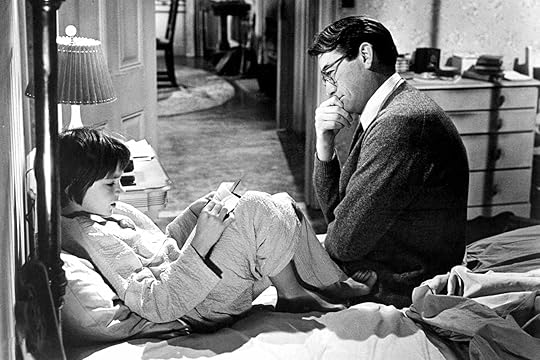
#3 – Building Complex Characters.
Let’s face it: cardboard characters are boring. Real people are messy, complicated, and full of contradictions.
Drawing from real life—your quirks, your best friend’s weird habits, that annoying neighbor who always shouts at his cat—gives characters depth and dimension.
A great example is Harper Lee’s Atticus Finch in To Kill a Mockingbird. He’s based on Lee’s own father, a lawyer with a fierce sense of justice.
Because Atticus is rooted in reality, he’s both noble and achingly human, which is why he sticks with us long after the last page.
My first-grade teacher inspired one of my most beloved characters, Helen from Full Circle.
This Holocaust survivor carried herself with unbreakable grace and strength despite unimaginable trauma. I wanted Helen to embody that same quiet resilience. Real-life inspiration makes characters richer because they’re layered with truths drawn from actual lives.
Even when creating antagonists or flawed protagonists, digging into your own darker impulses or recalling people who’ve wronged you can add nuance and empathy. Villains aren’t just evil for the sake of being evil—they have motivations rooted in human experience, whether it’s pride, jealousy, or desperation.
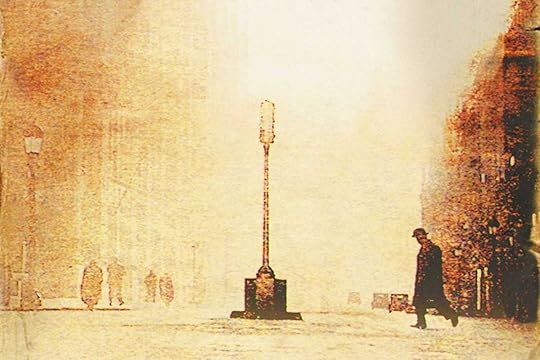
#4 –Setting That Feels Alive.
Ever been so absorbed in a book that you could practically smell the rain or feel the heat of the sun on your skin?
That’s a sign of a well-crafted setting—one that’s vivid, textured, and grounded in real experience.
Carlos Ruiz Zafón’s The Shadow of the Wind is a masterclass in this.
His depiction of Barcelona—dark, labyrinthine, soaked in history—feels like a character itself. You can almost hear the echoes of secrets whispering through the alleys.
I try to weave that same richness into my settings. In Things We Do For Love, the Bach family house is based on a real place in Oxford—a charming, slightly creaky old house where my parents lived while my father was a visiting professor. Spending time there helped me infuse the story with authentic details that ground the setting without overwhelming it.
Whether your story is set in your hometown or an imagined world, grounding it in sensory details from places you know will make readers feel like they’ve been there, too.
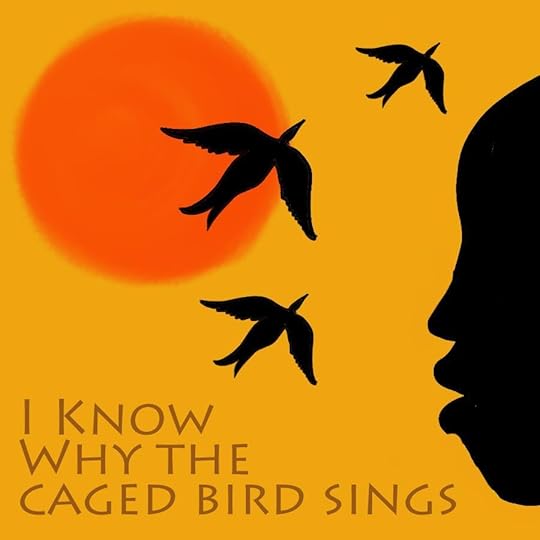
#5 – Channeling Personal Struggles into Themes.
Writing from your own struggles is like bleeding on the page—but it’s also incredibly cathartic.
Maya Angelou’s I Know Why the Caged Bird Sings tackles racism and trauma with such brutal honesty that it both hurts and heals.
By drawing from her own pain, Angelou transforms her personal experiences into a universal message of resilience.
In my stories, themes of loss and rebirth keep cropping up—not because I’m obsessed with tragedy, but because I’m fascinated by how people find strength in the wreckage. Writing about overcoming obstacles, no matter how daunting, is my way of honoring the human spirit.
Personal themes don’t have to be heavy or tragic. Humor, hope, and the ridiculousness of everyday life can be just as meaningful. Leaning into your own quirks and joys will create stories that resonate with readers on a fundamental level.
In Conclusion – Writing what you know doesn’t mean airing your deepest secrets or turning your life into a tell-all. It means channeling your emotions, experiences, and perspectives into real and relatable stories. Use your life as a wellspring of inspiration, and your writing will be richer for it.
So, next time you’re stuck, don’t just stare at the blank page—dig into your own heart. Your truth might be exactly what your story needs.
Now it’s YOUR turn – What’s one personal experience that you think would make an amazing story?
Would love to get your input in the comment box below.
The post How Your Life Makes Your Writing Better. appeared first on Vered Neta.
March 9, 2025
7 Secrets to Realistic Dialogue.
Dialogue is the heartbeat of fiction. It brings characters to life, reveals their personalities, and drives the plot forward in ways that narration alone can’t.
But getting dialogue to sound real—like something people would actually say—can be one of the trickiest aspects of writing. The goal is to make your conversations feel alive and natural, not stiff or forced.
So, how do the masters do it?
Let’s dive into the magic of dialogue by exploring seven key techniques that can help make your characters’ conversations feel authentic, engaging, and full of depth.
7 Key Elements That Make Your Theme Unforgettable.
 #1 – Eavesdrop (Legally, Of Course).
#1 – Eavesdrop (Legally, Of Course).
Want to write dialogue that feels real? Start by listening to how people actually talk.
Conversations in the real world are messy and imperfect. They’re filled with interruptions, unfinished thoughts, and little quirks that make each exchange unique.
To capture this, take a moment to observe the way people speak around you—whether it’s in coffee shops, parks, or even your own home. Just don’t be creepy about it!
Real-life dialogue can be full of filler words like “um,” “like,” and “you know.” While they add to the flow of speech, they tend to bog down writing. Your job is to capture that natural rhythm while cutting out the fluff.
A fantastic example is Normal People by Sally Rooney. Rooney’s dialogue often feels like you’re overhearing a conversation—real, raw, and unpolished.
Take this exchange between Connell and Marianne:
“Do you ever think your life might be easier if you weren’t so smart?” Marianne asks.
“No.”
“I think it’s easier for me. I’m not as smart.”
He frowns. “Don’t say that.”
Notice how the conversation isn’t perfectly structured.
There’s a hesitancy, an awkwardness, that makes their relationship feel real. It’s imperfect, but it’s that imperfection that makes it so emotionally engaging.
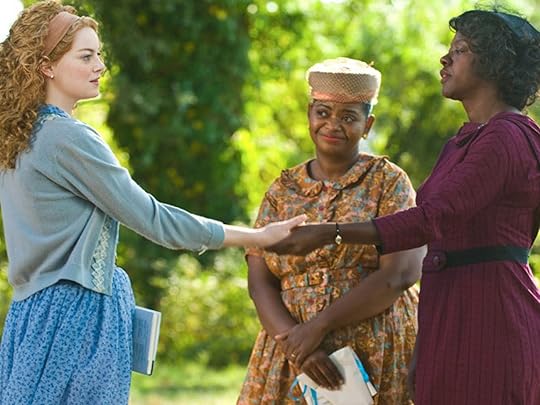 #2 – Give Each Character a Unique Voice (Nobody Likes Clones).
#2 – Give Each Character a Unique Voice (Nobody Likes Clones).
If all your characters sound the same, your dialogue will fall flat. People speak differently depending on their background, education, and personality.
A detective won’t talk like a teenager, and a college professor won’t sound like a bartender from Brooklyn (unless that’s their backstory, of course!). Paying attention to diction, rhythm, and tone helps distinguish one character’s voice from another.
Take The Help by Kathryn Stockett. The novel features a cast of characters from different social classes and backgrounds, and their speech patterns reflect that.
For instance, Aibileen, a Black maid in 1960s Mississippi, speaks in African American Vernacular English (AAVE):
“You is kind. You is smart. You is important.” This contrasts sharply with Skeeter, the white journalist:
“I want to write something that means something. Something that tells the truth.”
The difference in speech between these two characters speaks volumes about their upbringing and their worlds. The unique voices highlight their contrasting backgrounds and deepen the novel’s themes of race and identity.
By giving each character their own voice, you create more distinct personalities and make the dialogue more dynamic.
A good way to do this is to think about how people speak in real life. If your character comes from a rural background, their speech might be more straightforward or include regionalisms.
If they’re highly educated, they might use more formal language or have a more measured rhythm.
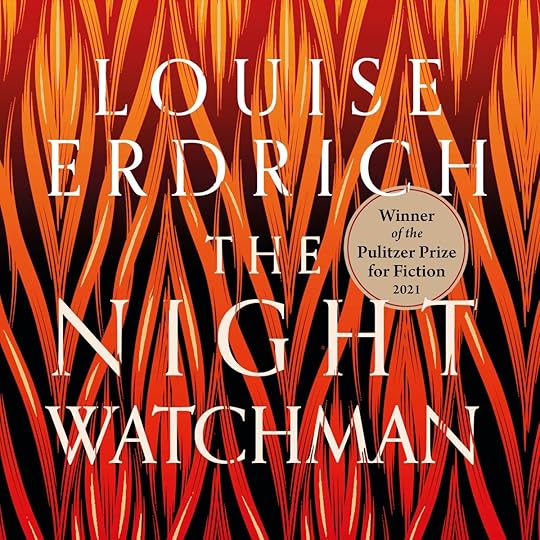
#3 – Master the Art of Subtext (What’s Left Unsaid Matters).
One of the most powerful techniques in writing dialogue is subtext—the underlying meaning or tension beneath the words.
People often don’t say exactly what they mean, especially in high-stakes or emotionally charged situations. The best dialogue reveals what characters are really feeling or thinking, even when they’re not saying it outright.
For example, in The Night Watchman by Louise Erdrich, a conversation about love is laced with subtext. Notice how this exchange leaves more unsaid than said:
“You gonna come back?” she asked, trying to sound casual.
He shrugged. “Maybe. Depends.”
“Depends on what?”
“On things.”
There’s a tension here, but it’s not explicitly laid out. The characters’ reluctance to fully address their feelings makes the conversation feel more genuine.
The subtext in dialogue works to build intrigue and give readers a deeper understanding of the characters’ emotional states. What they don’t say often speaks louder than what they do.
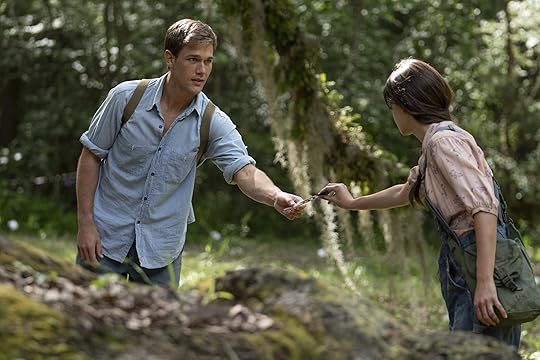 #4 – Ditch the Perfect Speech (Nobody Talks Like Shakespeare).
#4 – Ditch the Perfect Speech (Nobody Talks Like Shakespeare).
Real conversations are messy. People stammer, interrupt each other, use slang, and sometimes even forget what they were saying mid-sentence.
Dialogue that’s too polished often comes off as unnatural. If every sentence is perfect, it might start to feel like a monologue rather than a conversation.
In Where the Crawdads Sing by Delia Owens, the characters speak in ways that reflect their backgrounds. Kya, who grows up isolated in the marshes, has a more raw, unpolished way of speaking.
For example:
“You still got some learnin’ to do, Miss Marsh Girl.”
“I know how to read people better than you.”
“Maybe so. But there’s more to life than what you see in people.”
The slight roughness in Kya’s speech feels authentic to her character, someone who’s self-taught and protective of her emotions. Tate’s dialogue, on the other hand, is more measured, reflecting his different upbringing. The contrast between their speech patterns brings their personalities to life.
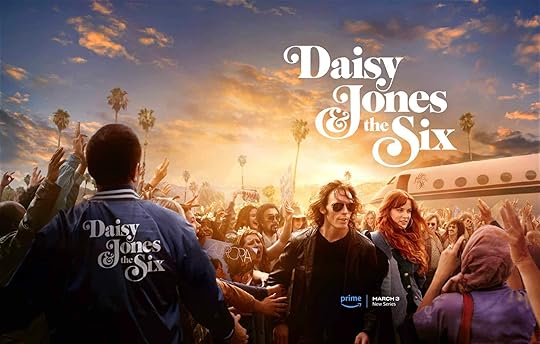
#5 – Read Your Dialogue Aloud (Yes, Even the Awkward Parts).
Here’s a little secret: dialogue that looks fine on the page can sound horrible when read aloud.
If something feels off in your dialogue, reading it aloud will help you spot the problem. Your ear will catch what your eyes miss, like sentences that are too long or awkward phrasing. It also helps you pay attention to pacing and rhythm.
For example, in Daisy Jones & The Six by Taylor Jenkins Reid, the dialogue is crafted to feel like a real conversation—quick, sharp, and sometimes stilted. The novel is told through interview transcripts, so the dialogue is fragmented and often interrupted:
“I wasn’t in love with Billy Dunne. I wasn’t. But he had this way of looking at me that made me forget that.”
“She says that now. But back then? She was always watching me.”
This dialogue feels like a real conversation—imperfect, sometimes choppy, but full of emotion and tension.
Reading your dialogue out loud lets you check for clunky lines.
If you trip over a sentence or notice that a character sounds way too formal or robotic, it’s time to revise. Better yet, act out the scene with a friend or even your dog (if they’re patient).
The goal is to make the conversation sound like something a real person would say.
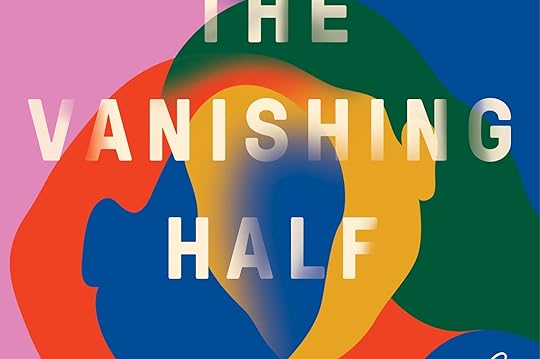
#6 – Use Dialogue to Reveal Character, Not Just to Dump Information.
Have you ever read dialogue that feels like it’s just information being dumped on the page?
We’ve all seen those awkward conversations where characters explain things they already know for the reader’s benefit.
(Think of a spy movie where two agents remind each other of their entire mission before jumping out of a plane.)
Great dialogue, however, isn’t about delivering backstory. It’s about revealing who the characters are through what they say—and, just as importantly, what they don’t say.
In The Vanishing Half by Britt Bennett, the dialogue between Desiree and Stella—twin sisters with radically different life paths—reveals more about their identities than a monologue ever could:
“You ever think about going back?” Desiree asked.
Stella blinked. “Going back where?”
“You know where.”
“I have a life here, Desiree. A family.”
Here, we learn everything we need to know about Stella’s emotional state—her hesitance, her defensiveness—without her ever explicitly saying, “I’m conflicted about my past.”
This is the power of subtext: it reveals more about a character’s inner life than mere exposition ever could.
When writing dialogue, ask yourself: how is this conversation revealing something about the character?
What can the reader infer about their personality, their motivations, or their emotional state based on the way they speak?
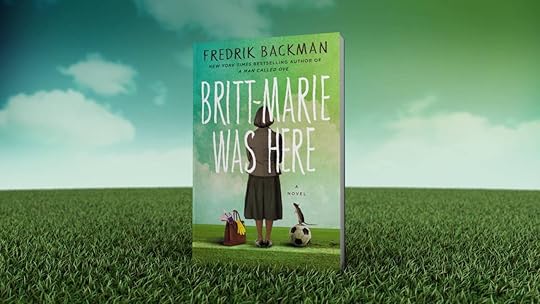 #7 – Balance Dialogue with Action and Description
#7 – Balance Dialogue with Action and Description
Finally, dialogue doesn’t exist in a vacuum. People don’t just stand still and talk.
They move, fidget, react to their surroundings, and communicate through body language as well as words.
To make your dialogue feel truly alive, incorporate physical actions and environmental details into the conversation.
In Britt-Marie Was Here by Fredrik Backman, the protagonist, Britt-Marie, often uses physical actions to help convey her emotions.
In one scene, when asked about love, she responds:
“Britt-Marie, have you ever been in love?”
She hesitates. “Certainly not.”
“Not even Kent?”
She straightens her cutlery. “I don’t see how that is relevant.”
The action of straightening the cutlery adds depth to her response. It shows that Britt-Marie is avoiding the emotional question, retreating into the comfort of her obsessive need for control.
Without that physical detail, the exchange would lose its emotional weight.
When writing dialogue, don’t forget to let your characters interact with their environment. Let the setting influence their tone, add action beats, or use body language to communicate what words can’t.
This will make your dialogue feel more immersive and dynamic.
In Conclusion – Authentic dialogue isn’t about copying real-life conversations word-for-word—it’s about capturing the essence of how people talk while keeping it engaging and purposeful.
By eavesdropping on real speech, giving each character a unique voice, using subtext, avoiding overly perfect lines, and balancing dialogue with action, you’ll be able to create conversations that feel alive on the page.
So, the next time you sit down to write dialogue, think about the rhythms of actual speech, the nuances that make each character distinct, and how their words reveal more than just information.
Remember – dialogue isn’t just about what characters say—it’s about what they’re trying to communicate underneath the surface. The more you tap into this, the more your conversations will come to life.
Happy writing!
Now it’s YOUR turn – What’s your favorite example of realistic dialogue in a book or movie?
Would love to get your input in the comment box below.
The post 7 Secrets to Realistic Dialogue. appeared first on Vered Neta.
March 2, 2025
How Female Oscar Winners Changed Film Forever.
The Oscars have always been more than just glitz, glamour, and teary acceptance speeches.
They serve as a cinematic time capsule, reflecting how Hollywood—and society—sees women.
Over the decades, the roles that have won Best Actress and Best Supporting Actress tell a fascinating story of transformation.
Gone are the days when women were just damsels waiting to be saved.
Now, they’re warriors, visionaries, rebels, and rule-breakers. Let’s celebrate this evolution with ten iconic performances showcasing how far we’ve come!
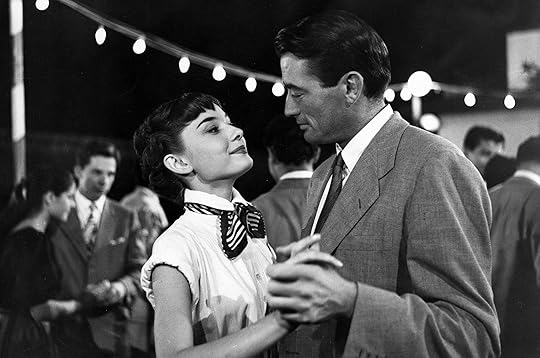 #1 – The Classic Hollywood Ingenue.
#1 – The Classic Hollywood Ingenue.
Audrey Hepburn in Roman Holiday (1953). Back in the golden days of Hollywood, leading ladies were often charming, elegant, and in need of a little male guidance.
Enter Audrey Hepburn’s Princess Ann—a royal on the run who gives us romance, adventure, and a pixie-cut revolution.
She’s delightful, but her role still fits within the era’s idea of femininity: graceful, idealistic, and ultimately tamed by love. Hollywood loved its ingenues, but this was just the beginning of women carving out more dynamic spaces on screen!
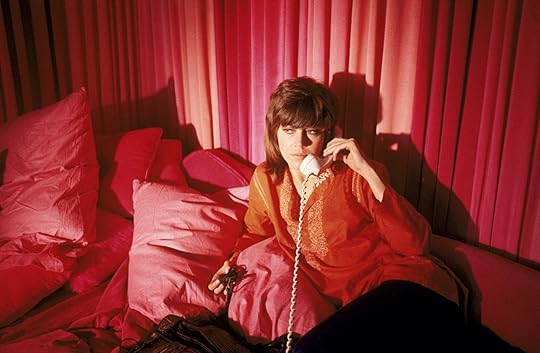 #2 – The Strong, Yet Tragic, Women of the 1960s-70s.
#2 – The Strong, Yet Tragic, Women of the 1960s-70s.
Jane Fonda in Klute (1971).
As feminism made waves, female characters started fighting back—literally and figuratively.
Jane Fonda’s Bree Daniels in Klute is smart, self-aware, and in control of her own destiny (as much as society allows).
These roles gave women agency, but often with a side of suffering.
Hollywood was waking up to the fact that women had depth, struggles, and desires beyond being the perfect girlfriend or devoted wife.
These characters weren’t just reacting to men anymore—they had stories of their own.
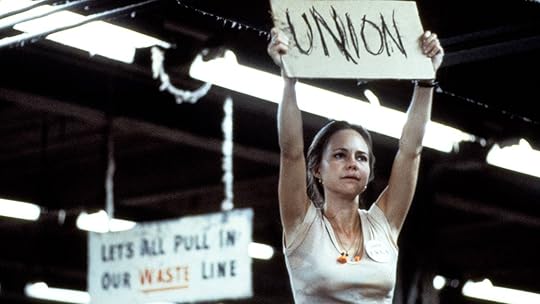 #3 – The Working Woman Breakthrough.
#3 – The Working Woman Breakthrough.
Sally Field in Norma Rae (1979).
By the late ’70s, female characters were rolling up their sleeves and getting things done.
Sally Field’s Norma Rae wasn’t about glamour—she was a tough-as-nails factory worker fighting for labor rights.
No prince, no fairy tale, just grit, heart, and a raised union sign that became an unforgettable symbol of strength.
Hollywood was learning that a woman’s worth wasn’t tied to romance—it was about her voice, her fight, and her impact. Women were not just supporting characters in men’s stories anymore; they were the story.
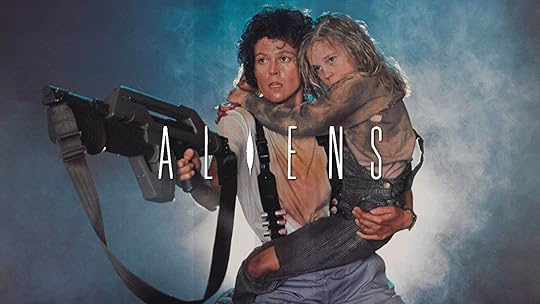 #4 – The 1980s Action Heroine.
#4 – The 1980s Action Heroine.
Sigourney Weaver in Aliens (1986).
Until the ‘80s, action films were strictly a boys’ club. Then came Ellen Ripley, ready to take down terrifying aliens while barely breaking a sweat.
Sigourney Weaver’s portrayal proved that women could lead action-packed blockbusters just as fiercely as men. Sure, she didn’t win the Oscar (a crime, honestly), but she changed the game!
Around this time, Marlee Matlin did take home an Oscar for Children of a Lesser God (1986), playing a fiercely independent deaf woman who refused to conform to expectations. The message? Strong women came in all forms—and they were here to stay.
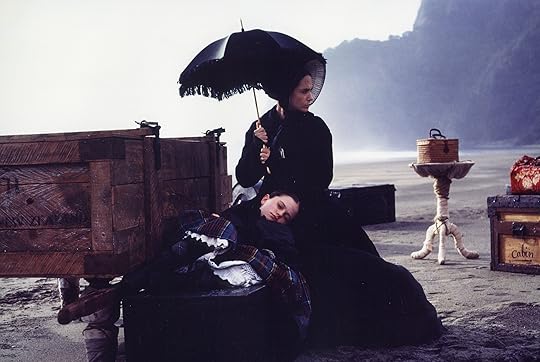
#5 – The Unconventional Mothers of the 1990s.
Holly Hunter in The Piano (1993).
Motherhood in film used to be about sacrifice and selflessness. Enter Holly Hunter as Ada McGrath, a mute pianist who has desires, passions, and a will of her own.
Her character refuses to be just a mother—she’s an artist, a lover, and a woman carving out her place in the world.
This shift redefined motherhood on screen, proving that being a mom didn’t mean giving up individuality.
Women in film were no longer just nurturers; they were complex, multi-dimensional beings.
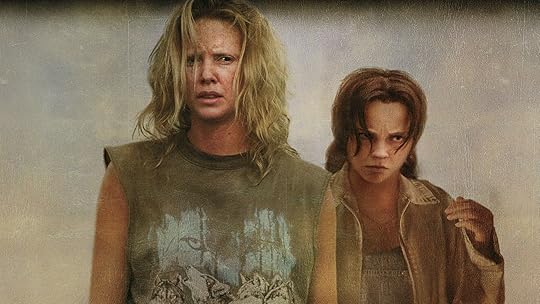 #6 –
The Rise of the Anti-Heroine.
#6 –
The Rise of the Anti-Heroine.
Charlize Theron in Monster (2003).
By the 2000s, female characters no longer had to be “likeable” to win big.
Charlize Theron’s Aileen Wuornos was messy, brutal, and deeply human. Hollywood finally embraced complex, morally gray women—flawed, unpredictable, and unapologetic.
No damsels here, just raw, unforgettable performances that shattered outdated ideas of what a leading lady should be. It was a turning point—audiences were ready for women who weren’t just heroes or victims but something in between.
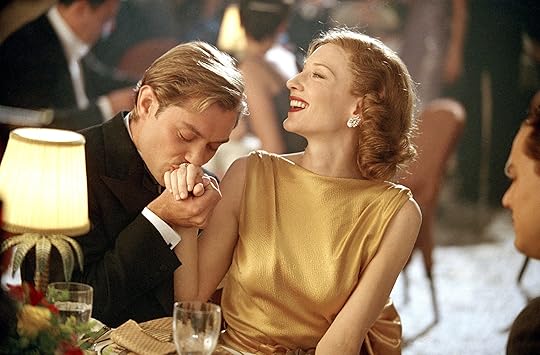
#7 – The Era of Biographical Powerhouses.
Cate Blanchett in The Aviator (2004).
Biopics became Oscar gold, and Hollywood started giving women their due.
Blanchett’s portrayal of Katharine Hepburn captured the sharp wit and independence of a real-life trailblazer.
These roles were a love letter to the women who changed history—proving that their stories were just as thrilling, dramatic, and worthy of the silver screen as any man’s.
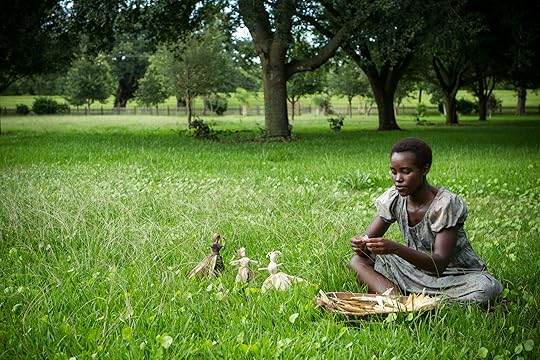
#8 – The Diversity Movement & New Narratives.
Lupita Nyong’o in 12 Years a Slave (2013). Hollywood’s long-overdue reckoning with representation finally took centre stage.
Lupita Nyong’o’s devastating performance as Patsey was a milestone, shining a light on stories that had been ignored for too long.
This era saw women of colour stepping into lead roles, demanding recognition, and proving that diverse stories weren’t just necessary—they were essential.
The industry still has work to do, but this win was a decisive step forward.
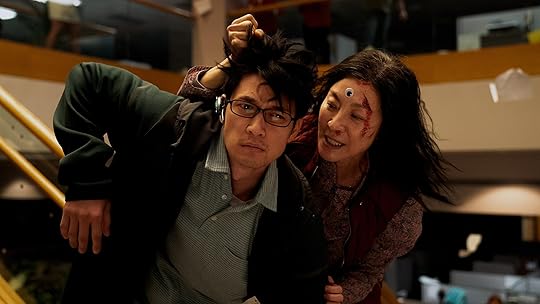 #9 – Women in Genre Films.
#9 – Women in Genre Films.
Michelle Yeoh in Everything Everywhere All at Once (2022).
If anyone still doubted that women could lead genre films, Michelle Yeoh’s Oscar win put that to rest.
Kicking butt across multiple dimensions while delivering an emotionally gut-wrenching performance? Iconic.
Her win wasn’t just about representation—it was about breaking every mould Hollywood had ever placed on female characters. Sci-fi, fantasy, action, drama—women could do it all. And do it brilliantly.
 #10. The Rise of Aging Female Protagonists.
#10. The Rise of Aging Female Protagonists.
Frances McDormand in Nomadland (2020). Hollywood used to cast women over 40 as moms, grandmas, or side characters. Frances McDormand said, “Not on my watch.”
Nomadland put an older woman front and centre, telling a story about resilience, freedom, and reinvention.
No romantic subplot, no flashy spectacle—just a profoundly personal journey proving that women’s stories don’t stop at a certain age. In fact, they’re just getting started.
In Conclusion – From princesses to pioneers, femme fatales to fierce fighters, Oscar-winning women have rewritten the rules of cinema. Each win is a step forward, a statement that female characters are limitless in their complexity, power, and presence.
As Hollywood continues to evolve, one thing’s for sure—women aren’t just playing the game anymore. They’re redefining it. And we can’t wait to see what’s next.
Now it’s YOUR turn – What’s one iconic role you think should have won an Oscar but didn’t?
Would love to get your input in the comment box below.
The post How Female Oscar Winners Changed Film Forever. appeared first on Vered Neta.
February 23, 2025
Movie Night – Conclave.
Directed: Edward Berger
Writer: Peter Straughan & Robert Harris
Starring: Ralph Fiennes, Stanley Tucci, John Lithgow
Trivia: In the days before the machinery and special smoke effects shown in the film, the votes of an unsuccessful round were traditionally burned with straw to give the smoke a dark hue. White smoke from the Vatican chimney signals that another Pope has been elected.
****************************************************
The Setup.The Pope is dead. The Vatican is on lockdown. 118 cardinals must elect the next leader of the Catholic Church. Sounds like a quiet, solemn affair? Think again.
Conclave is less incense and prayer, more political chess match with life-altering stakes. The tension? Palpable. The drama? Delicious. The twist? Oh, we’ll get to that.
The story unfolds inside the walls of the Sistine Chapel, where centuries-old traditions meet modern-day power struggles. Each cardinal carries his own ambitions, alliances, and skeletons, making the election less about divine inspiration and more about political manoeuvring. Who will rise to the top? Who will fall? And most importantly, what secrets are lurking beneath the surface? The film masterfully builds suspense, turning what could have been a slow historical drama into a gripping thriller that had me hooked from the first frame.
Why I Watched It.If you’ve been around here long enough, you know “The Two Popes” is one of my all-time favourite films. It’s a movie I revisit over and over, drawn in by its sharp dialogue and powerhouse performances.
So when Conclave arrived, offering another deep dive into the Vatican’s inner workings, I had to see if it could hold a candle to my beloved Two Popes. And let me tell you—it did not disappoint.
Where The Two Popes focused on the ideological debate between Pope Benedict XVI and the future Pope Francis, Conclave dives into the election process itself, revealing just how much of it is shaped by human flaws, desires, and fears.
As a fan of political dramas, I couldn’t resist watching a room full of powerful men in red robes subtly (and not-so-subtly) backstab and negotiate their way to the top. And, of course, with Ralph Fiennes at the helm, I knew I was in for a treat.
What Makes it so Compelling?Ralph Fienns is a force. Playing Cardinal Lawrence, he’s the steady anchor in a storm of secrets and schemes. Subtle yet commanding, his performance is a chef’s kiss—and the Academy agrees with me as he got an Oscar nomination for it! If he doesn’t win… I’ll take it personally.
Fiennes doesn’t just play a role; he embodies it. His Lawrence is calm, measured, and observant, yet you can see the weight of responsibility pressing down on him in every glance and gesture. Unlike some of the other cardinals who are openly vying for power, Lawrence exudes quiet authority—making his journey through the film all the more compelling.
His performance alone makes Conclave worth watching, but the film offers so much more.
His subtle facial expressions and nuanced delivery add layers to a character who is constantly weighing his words and actions. You can see his internal conflict playing out in real time, making his role one of the most engaging aspects of the film. It’s no surprise that Fiennes’ performance is being recognized this awards season—this is the kind of role he was born to play.
The cinematography is breathtaking. Dark candlelit chapels, grand Vatican halls, and looming shadows make every scene feel weighty and significant.
If you’ve ever wondered what it feels like to be locked inside the Vatican during one of the most secretive events in history, this film delivers. The way light filters through stained glass, the imposing architecture, and the meticulous framing make Conclave a visual masterpiece.
The cinematography doesn’t just serve aesthetics—it enhances the story.
It makes the walls feel like they’re closing in as the tension rises. Every frame feels like a painting, reinforcing the gravity of the moment.
The film’s use of lighting is especially effective, casting long shadows that add to the sense of secrecy and deception. The contrast between the grandiosity of the Vatican and the personal struggles of the cardinals is beautifully captured, creating a visual tension that mirrors the film’s themes of tradition versus progress.
That ending! As a scriptwriter, I saw early on who would be chosen as the next pope (the clues were all there), but the final twist still caught me off guard. It’s a brilliant twist that ties the whole film together.
Without giving too much away, let’s just say that Conclave isn’t just about choosing a pope—it’s about revealing the truth.
The film spends most of its runtime exploring the divide between conservatism and progress within the Church, much like The Two Popes did, but then it delivers a final revelation that reframes everything.
Even if you see part of it coming, its execution is stunning. It’s the kind of twist that lingers in your mind long after the credits roll.
The twist isn’t just there for shock value—it makes sense within the larger themes of the film.
It forces you to reconsider everything that came before it, and it leaves you questioning how much of history is shaped by personal agendas rather than divine intervention.
It’s rare for a film to deliver a twist that feels both surprising and inevitable, but Conclave pulls it off masterfully.
At times, the film leans into melodrama.
Some moments feel crafted more for shock value than for organic storytelling.
But honestly? I was too wrapped up in the performances and tension to mind.
There are a few scenes where the dramatics are dialled up a little too high, making certain conflicts feel more cinematic than realistic.But let’s be real—this is a movie, not a documentary.
The heightened tension and emotional confrontations only add to the entertainment value. Plus, when you have a cast delivering such stellar performances, even the most theatrical moments feel earned.
Some characters are a bit one-dimensional, especially the more overtly power-hungry cardinals. While their motivations are clear, I would have loved to see a little more complexity in some of the supporting characters. That said, the core performances are so strong that these minor shortcomings don’t detract from the overall experience.
Final Thoughts.If you love a good political thriller, are fascinated by the Church’s inner workings, or just appreciate masterful performances, Conclave is a must-watch.
So grab a glass of wine (or holy water, your call) and settle in for a gripping night of Vatican drama. Just be warned: you may walk away questioning everything you thought you knew about faith, power, and who really holds the keys to the kingdom.
And if you, like me, still find yourself obsessed with The Two Popes, consider this a worthy companion piece—one that reminds us that behind every grand institution, there are people with ambitions, secrets, and, sometimes, motives that have nothing to do with divine will.
At its core, Conclave is more than just a behind-the-scenes look at papal elections.
It’s a gripping story about power, morality, and the eternal struggle between tradition and change.
Whether you watch it for the intrigue, the performances, or the stunning visuals, one thing’s for sure—you won’t be bored. And if you haven’t seen it yet, what are you waiting for? The Vatican is calling.
Verdict – 5/5 Stars in my Book.
The post Movie Night – Conclave. appeared first on Vered Neta.
February 16, 2025
From Chornobyl to Oppenheimer – Rewriting the Past.
As some of you know, I’m a total history nerd. Give me a historical novel, a period drama, or even a wildly inaccurate but entertaining historical movie, and I’m all in.
I used to think this obsession was just a family quirk—something ingrained in me after years of dinner-table debates with my dad, the history professor. Following in his footsteps, I got my own degree in history and archaeology, but I never expected my love for the past to be something others found just as exciting.
Yet, here we are—living in a golden age of historical storytelling where books and movies are bringing history to life like never before!
Storytellers today are diving into real-world events, reframing them in new ways, and drawing powerful connections between past and present. Whether it’s a fresh take on a well-known historical moment, a gut-wrenching allegory, or a complete reimagining of history itself, these narratives do more than just entertain—they make us reflect on who we are and how we got here.
7 Powerful Shifts in How We Tell Historical Stories.
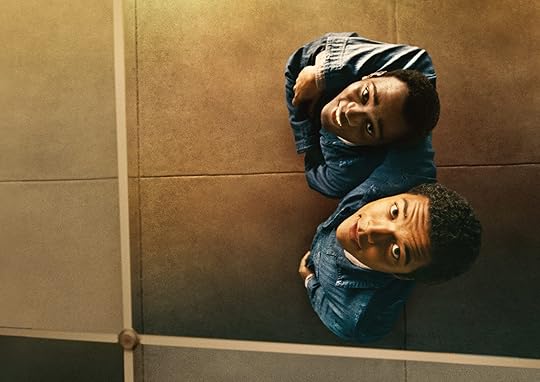
#1 – Reframing the Past for a New Generation.
Ever notice how some stories take historical events and flip them on their heads, offering fresh perspectives that challenge the “official” version of history?
This approach doesn’t just make history more accessible—it forces us to re-evaluate what we thought we knew.
Take The Color Purple (2023), directed by Blitz Bazawule. This adaptation builds on Alice Walker’s novel and the 1985 film but recontextualizes the story with modern sensibilities. Set in the early 20th-century American South, it highlights ongoing conversations about racial injustice, gender roles, and the legacy of slavery—reminding us that history isn’t just something in textbooks.
Or look at The Nickel Boys (2019) by Colson Whitehead. Inspired by the real horrors of the Dozier School for Boys, this Pulitzer Prize-winning novel fictionalizes historical injustices to expose systemic racism. It’s a bridge between past and present, proving that history’s shadows still linger today.
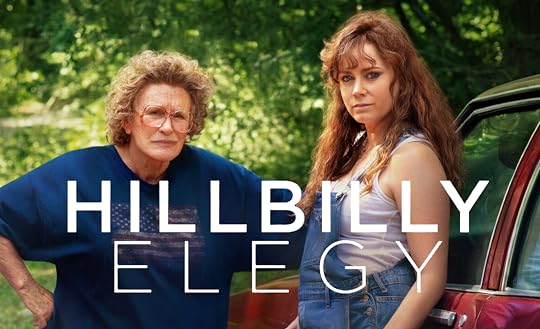 #2 – Historical Trauma as Contemporary Allegory.
#2 – Historical Trauma as Contemporary Allegory.
Not all historical narratives are straightforward retellings. Some stories don’t explicitly retell history but use historical trauma as a backdrop to explore universal themes of survival, resistance, and identity.
These allegories provide an emotional and psychological lens through which audiences can process historical injustices and their lingering consequences.
By drawing connections between past and present, these narratives offer a way to examine trauma’s enduring effects across generations, making history feel deeply personal and relevant to contemporary audiences.
Take Hillbilly Elegy (2020). While primarily a memoir, it touches on the economic struggles of Appalachian communities, reflecting historical patterns of industrial decline, economic disparity, and the opioid crisis.
Then there’s Parasite (2019), which—though not a history lesson per se—brilliantly critiques South Korea’s wealth inequality, a problem rooted in decades of economic transformation. The message? Economic struggles transcend borders and time periods.
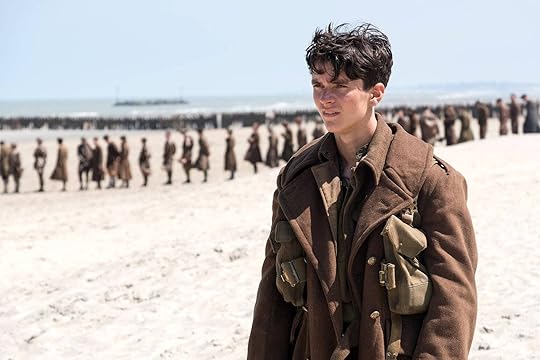
#3 – War, Politics, and the Personal Cost of History.
War and political struggles are frequent subjects in contemporary storytelling, often reexamined with new insights or from perspectives that were historically overlooked.
These narratives highlight the personal cost of war, the ethical dilemmas faced by those involved, and the long-term consequences of political decisions.
By humanizing historical conflicts, these stories challenge simplistic hero-versus-villain narratives and encourage a more nuanced understanding of the complexities of war and political upheaval. They also allow for a reassessment of historical events in light of modern values, making history more relevant and engaging for contemporary audiences
Christopher Nolan’s Dunkirk (2017) ditches traditional war-movie tropes, instead using minimal dialogue and an intense, fragmented structure to make audiences feel the raw, immediate chaos of World War II.
Jennifer Kent’s The Nightingale (2018) (not to be confused with Kristin Hannah’s book) takes us to 19th-century Australia, where British colonialism’s violent legacy plays out through one woman’s brutal journey for justice. The film doesn’t shy away from issues of race, gender, and oppression—linking historical atrocities to today’s discussions about justice and reparations.
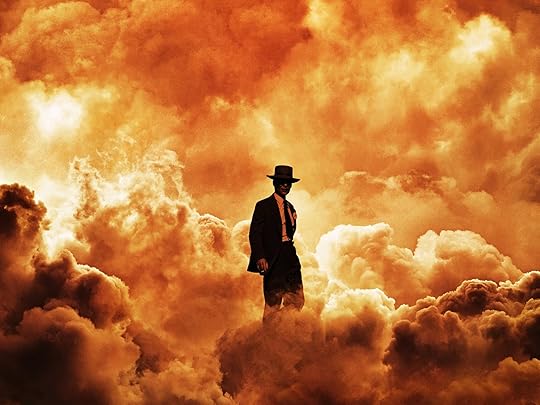 #4 – Historical Figures, Reimagined.
#4 – Historical Figures, Reimagined.
We’ve seen plenty of biopics, but modern storytelling is moving beyond simple hero worship.
Many recent films and books have sought to explore historical figures from new angles, often humanizing them or presenting lesser-known aspects of their lives.
These narratives allow contemporary audiences to connect with historical figures in a more personal and relatable way, showing their internal struggles, contradictions, and moral dilemmas.
By moving beyond traditional hagiographies, these stories challenge idealized portrayals and reveal the complexities of figures who shaped history, making them feel more relevant and accessible to modern viewers.
Take Oppenheimer (2023), another Christopher Nolan masterpiece. Instead of just showing J. Robert Oppenheimer as “the father of the atomic bomb,” the film delves into his internal conflicts and the haunting consequences of his work. In an age of nuclear anxieties, his story hits close to home.
Or consider Hidden Figures (2016), which brought long-overlooked Black women mathematicians at NASA into the spotlight. By shifting the focus away from the usual white male protagonists, the film rewrote history in a way that felt fresh, necessary, and long overdue.
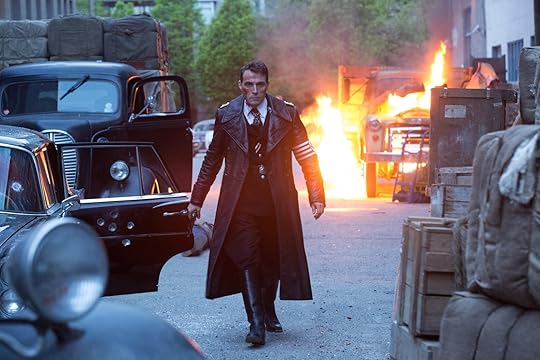
#5 – What If History Took a Detour? (Alternative Histories & Speculative Fiction).
What if the past didn’t happen the way we think?
Some of the most compelling stories come from playing the ultimate game of “what if.”
These type of storytellers engage with history by reimagining it, offering alternative outcomes that challenge our understanding of historical truth.
These speculative narratives allow for creative explorations of “what if” scenarios, examining the ripple effects of small changes in history.
By blending reality with fiction, these stories push audiences to reflect on how history is constructed and the forces that shape it. They also serve as a critique of real-world power dynamics, illustrating how different choices might have led to dramatically different futures.
Amazon’s The Man in the High Castle (2015-2019), based on Philip K. Dick’s novel, imagines a world where the Axis Powers won World War II. It’s a chilling look at how fragile democracy can be and a reminder that history is shaped by choices.
Apple TV’s For All Mankind (2019–present) explores an alternate history where the Soviet Union beat the United States to the Moon, sparking an extended space race. By shifting this pivotal moment, the series reimagines technological progress, gender roles, and global politics in a way that challenges our assumptions about historical inevitability. This speculative retelling highlights how single events can alter history’s trajectory, showing us how different our world might be with just a few key changes.
#6 – Social Movements and Their Place in Storytelling.
Contemporary storytelling often draws inspiration from recent social movements, reflecting their historical roots and impact on modern society.
These narratives document historical struggles and serve as a call to action for contemporary audiences.
By dramatizing personal and collective struggles, they provide a deeper understanding of activists’ motivations and challenges. They also highlight the ongoing relevance of past movements, illustrating how history informs today’s fight for justice.
Take Judas and the Black Messiah (2021), which tells the story of Fred Hampton and the Black Panther Party while drawing parallels to modern-day activism. It forces us to confront how past fights for justice still echo in today’s world.
Or Women Talking (2022), based on Miriam Toews’ novel. Inspired by real events, this film explores a group of Mennonite women deciding whether to leave their abusive community. It’s a historical story that resonates strongly with the #MeToo movement, proving that history isn’t just something behind us—it’s something we’re still living through.
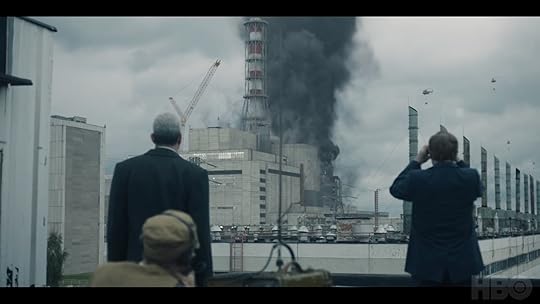 #7 – Technology’s Role in Shaping History.
#7 – Technology’s Role in Shaping History.
Technology doesn’t just shape the present; it has the power to redefine how we understand the past.
Several recent works have explored how technological advancements have shaped historical narratives and continue to influence society today.
HBO’s Chernobyl (2019) dramatizes the infamous nuclear disaster, turning a historical event into a terrifying cautionary tale about governmental failures and misinformation. The series exposes how technology, when mishandled or used irresponsibly, can have devastating consequences. It also highlights how censorship and the suppression of truth can shape public perception, altering the way history is recorded and remembered.
Meanwhile, The Social Dilemma (2020) examines the history of social media and its impact on society, showing how modern technology is rewriting history in real time. The rapid rise of artificial intelligence, deepfake technology, and digital misinformation adds another layer to historical narratives, making it harder than ever to distinguish fact from fiction.
The way we consume history today is increasingly shaped by algorithms, influencing what stories get told and whose voices are amplified. As seen in recent events, social media can shape public opinion, influence elections, and even spark social movements, proving that digital platforms are not just passive tools but active participants in historical change.
In Conclusion – History isn’t just something that happened—it’s something that keeps happening.
Whether through direct retellings, allegories, or wild reimaginings, today’s books and films ensure that history remains relevant, engaging, and, most importantly, unforgettable. As long as we keep telling stories, history will always have a place in them—challenging us, teaching us, and reminding us of the lessons we should never forget.
Now it’s YOUR turn – Which historical film, book, or TV show has had the biggest impact on how you see the past?
Would love to get your input in the comment box below.
The post From Chornobyl to Oppenheimer – Rewriting the Past. appeared first on Vered Neta.



